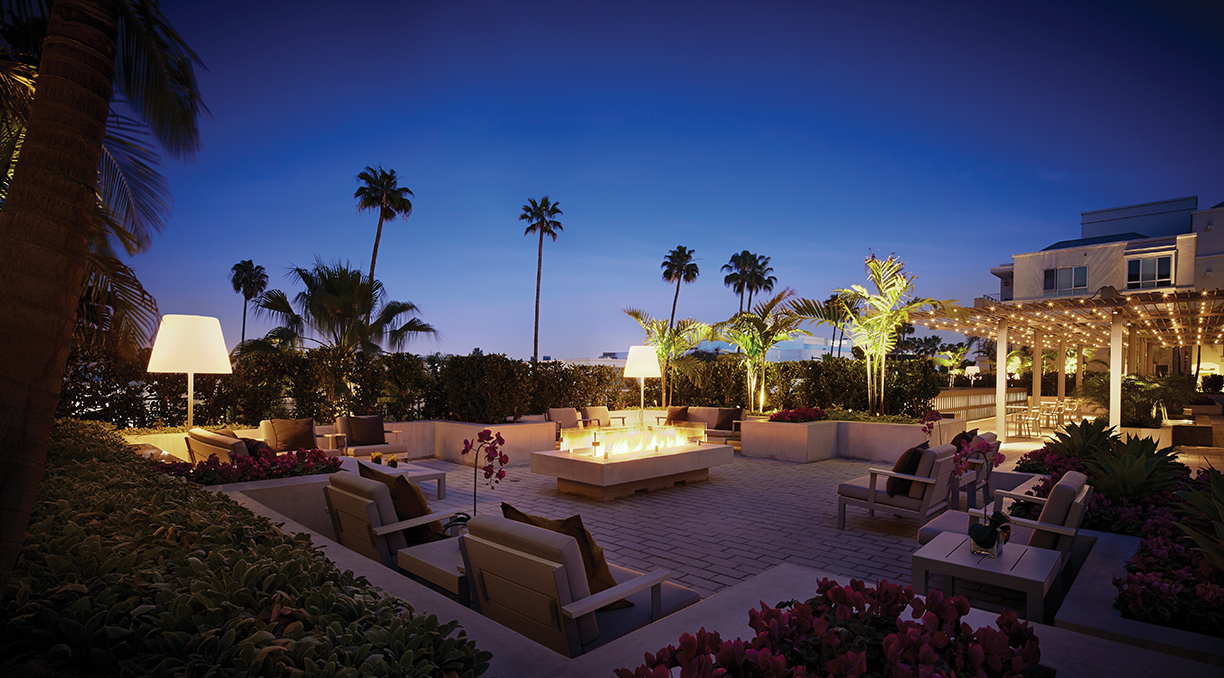
Residents of AKA Beverly Hills can enjoy the outdoor residents-only lounge, a spacious landscaped terrace with spectacular views of the Hollywood Hills.
Photo ©2014 Eric Staudenmaier.
In these times of social distancing and working from home, any amount of travel feels like an enormous reprieve from the new normal. Those needing or looking for high-end lodging away from home, for work or otherwise, might feel anxious striking out into a new city or living in a safe, clean environment. One brand is offering luxury, semi-permanent rental spaces in cities around the country that feel safe and more than comfortable.
The AKA brand originally formed in 2005 with the idea of recognizing an “unmet need in major cities for luxury extended-stay apartments with hotel services,” according to Elana Friedman, chief marketing officer of AKA. Founder Larry Korman and his family conceptualized furnished apartments that would satisfy residents’ need for flexible living arrangements without sacrificing luxury. Since then, according to Friedman, these innovative ideas have grown to incorporate the best in cuisine, design, wellness and technology in metropolitan locations all over, including London, New York, Los Angeles, Philadelphia, and Washington, D.C.
AKA specializes in weekly and monthly stays, therefore creating a “home away from home experience for our residents, no matter where they are traveling from,” Friedman says. She adds that to meet the demand of those who are looking for a self-sufficient living experience, AKA offers luxurious furnished apartments with modern kitchens, spacious floor plans and services as requested, all furnished in a contemporary style by renowned designers.
Each AKA location offers a diverse range of services designed to provide residents with comfort, choice and luxury for any length of stay. All locations provide on-site services such as a 24-hour front desk, dedicated doorman, meticulous housekeeping, valet and laundering, in-suite dining, secure transportation, and more. Private amenity spaces are included as well, from thoughtfully designed fitness centers and lounges, to cafes and cinemas.
With the developing public health crisis, priorities over privacy and cleanliness have grown, as well as a need for safe workspaces. AKA has not only recognized these concerns, but has adapted to remain open and flexible to residents.
“We concepted flexible office suites that will allow a person to book a suite to work, rent as a socially distanced office, or have the bed removed to create a workspace for two employees,” Friedman says. These suites also feature a full kitchen, private bathroom, copier/printer/scanner, complimentary WiFi, and can be booked on a weekly or monthly basis.
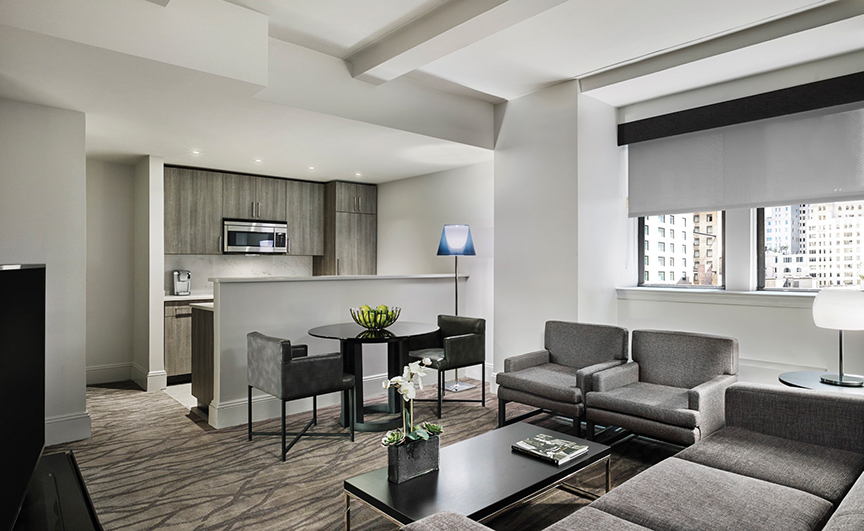
Flexible office space at AKA Central Park in New York.
Photo courtesy AKA Hotel Residences.
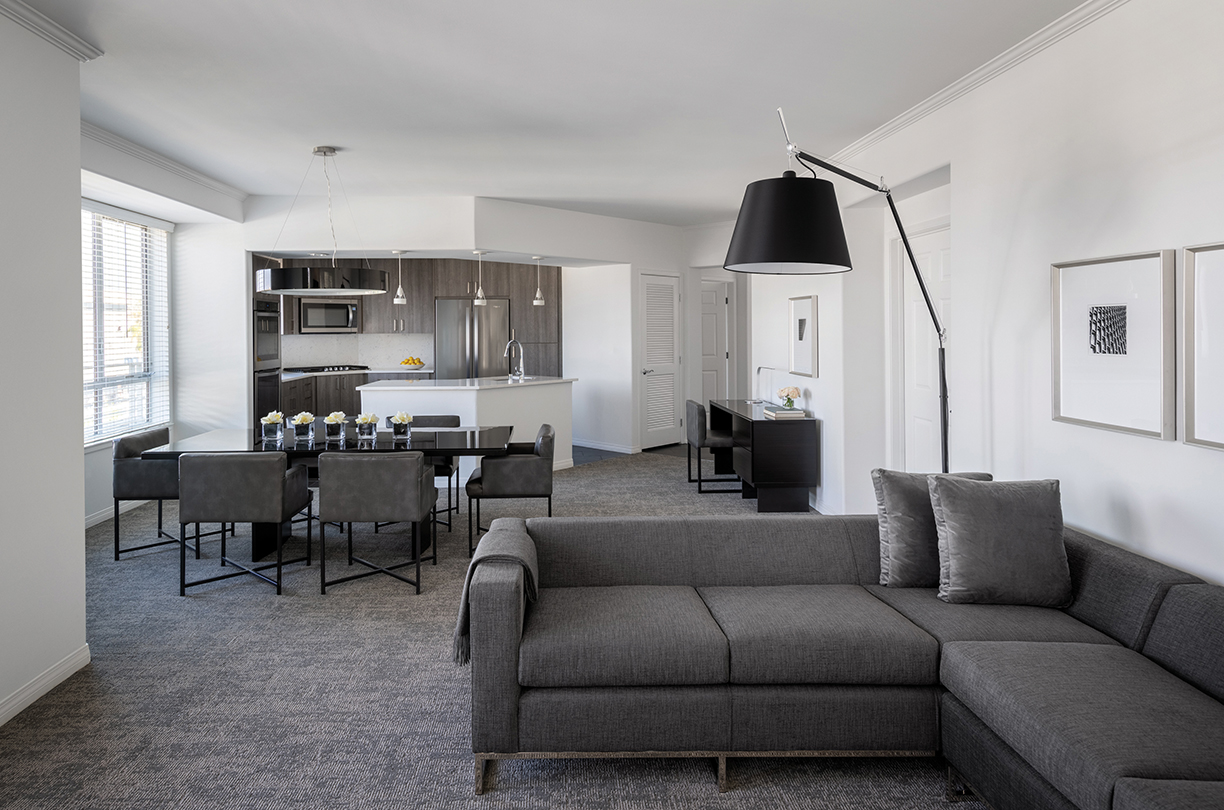
AKA Beverly Hills offers a contemporary residential oasis boasting suites with custom furnishings, private balconies and more.
Photo ©2018 Eric Staudenmaier
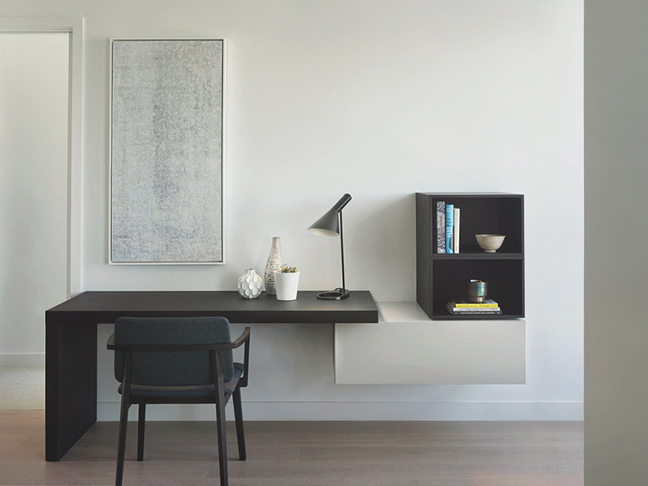
Private workspace at AKA University City.
Photo © Halkin Mason Photography
When it comes to traveling in today’s world, finding a balance between privacy and engaging activities can be difficult and have the potential to change the hospitality industry at its core. However, brands like AKA that are already seeing changes in what was “normal” prior to the pandemic, are finding ways to stay ahead. “People are now and will continue to be more hyper-focused on the cleanliness and safety of their surroundings, and these facets are taking the lead when planning a trip or experience,” Friedman notes. “Given that, we anticipate travelers will look for more extended-stay or serviced residence options coming out of the downturn as a way to have greater control over their accommodations.”
With AKA’s Live It! Program, AKA residents are encouraged to uncover new experiences like a local, while keeping safe in socially distanced settings. “From custom fitness sessions, improv classes, trapeze lessons, cooking classes and more, AKA connects travelers with the fabric of a city,” Friedman says. She adds that another new opportunity exclusive to AKA is an East Coast road trip package that offers travelers a chance to experience New York, Philadelphia and Washington, D.C., all in one trip. With two to three hours of driving between each destination, the getaway gives residents the opportunity to embark on a journey of sightseeing, outdoor activities, photo opportunities, local eateries, history and iconic stops along the way to the next city, all in a custom, outdoor, social-distanced activity itinerary.
For more information on the AKA East Coast Road Trip, visit the link here.
For more information on AKA’s Flexible Office Spaces, visit their website here.
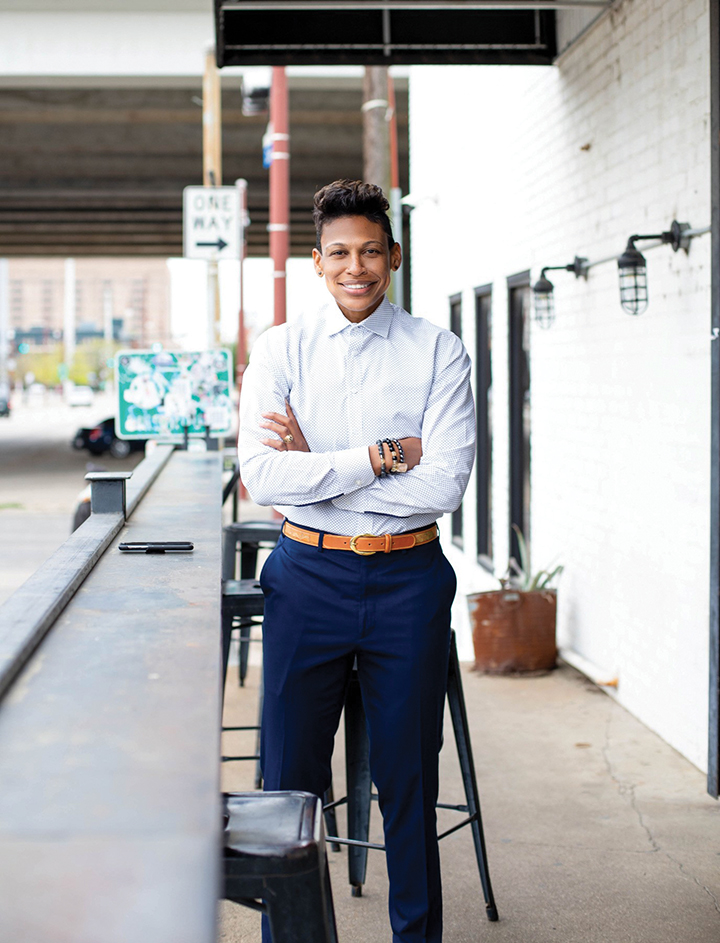
Khaliah O. Guillory, Owner of Nap Bar
A new set of businesses aims to help a sleep-deprived society relax and rejuvenate.
Nap bars. Upon hearing about this concept, various images come to mind, from a series of bedrooms with designated time slots for napping, to a pillowy oasis set in the clouds. While some ideas are more fantastical than others, the meaning behind many nap bar businesses and their missions is far more down to earth.
Whether naps are offered as a complimentary service or finely curated in a luxury setting, the importance of sleep has been reinvigorated by companies like these who know that the benefits of napping are nothing to sneeze (or snore) at in today’s world.
In recent years, with the rise of globalization and businesses running 24/7, productivity can and has for some time become a priority. Maria Jose Hernandez of recharj, a meditation studio headquartered in Washington, D.C., says the needs of the human body should take precedence, however.
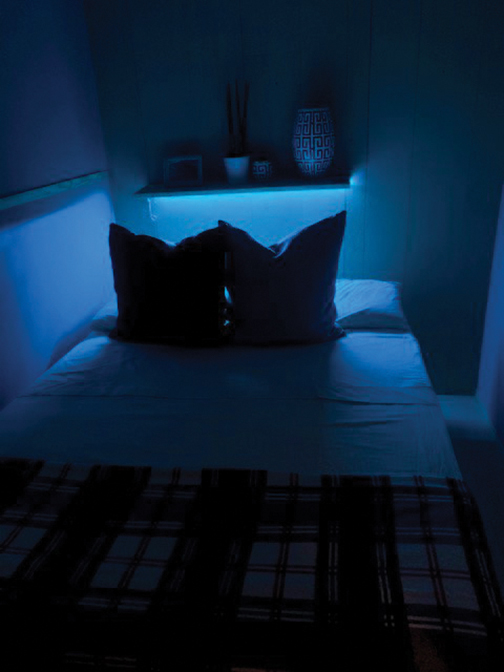
An avid lover of naps since childhood, Guillory developed her company as a way to keep herself from “taking naps in [her] car.”
Photos courtesy Nap Bar.
“Science has proven that sleep is how you are able to learn, retain memory — all these functions that we need to be productive.”
Many nap bars and sleep-oriented businesses have been developed by busy business professionals and entrepreneurs who found themselves suffering from sleep deprivation or sleep-related issues. For example, Khaliah O. Guillory was working at a Fortune 500 company and struggled with getting restful sleep when she was inspired to open Nap Bar in Houston. An avid lover of naps since childhood, she developed her company as a way to keep herself from “taking naps in [her] car,” and engage other young professionals to rest, relax and feel rejuvenated through a curated, white-glove napping experience.
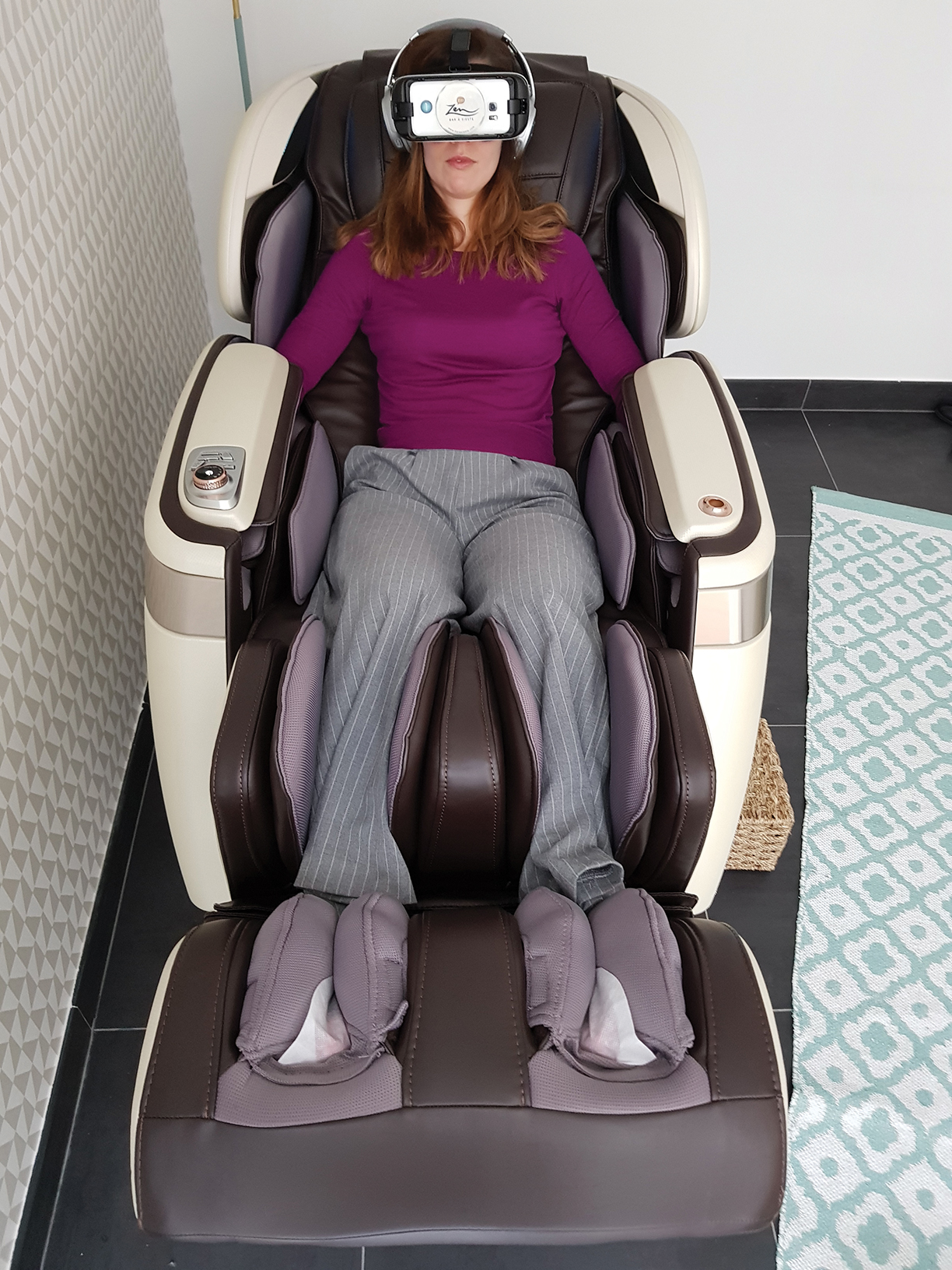
Top: Zen – Bar à Sieste Weightless Chair and VR.
Photos courtesy Zen – Bar à Sieste
Christophe Chanhsavang and his wife, Virginie, have had similar trials and tribulations. From Virginie’s corporate work hours to Christophe’s long hours of study, he realized from his experience working in the UK, China and Greece how much the concept of wellness was nonexistent in the French society. To avoid taking more naps in the office bathroom, Chanhsavang says they founded Zen – Bar à Sieste in 2011 in Paris and have since approached wellness from a holistic perspective by promoting sleep, nutrition, physical activity and mental health.
Professionals in the wellness industry have noted and continue to highlight the importance of sleep, which in turn has led to research and results into the benefits of napping. Guillory offers facts that have helped fuel the educational aspect of Nap Bar, including a NASA statistic that suggests shorter nap durations are better for reducing the impact of sleep inertia, a physiological state of impairment that affects cognitive and sensory-motor performance.*
Mauricio Villamizar, CEO of Pop & Rest in London, takes these findings a step further, noting how a lack of sleep can ultimately lead to disruptions in workflow. “Sleep deprivation is linked to lower productivity at work and it’s one of the main drivers of absenteeism … in the workplace. If we translate this into working days, we are looking at around 200,000 working days being lost each year in the UK only. In terms of economic consequences, it’s around £40 billion, almost 2 percent of the UK’s GDP,” Villamizar says.
Wellness overall has seen a resurgence in strength from businesses like these, as health has come to be the utmost priority of nations around the world. And just like there are many types of methods of getting and staying well, there are a variety of ways to nap.
Pop & Rest is a London-based wellness startup that connects locals and travelers with sleep and meditation pods, offering clients safe and secure spaces to unwind, rest, and work peacefully. According to Villamizar, customers can visit one of the company’s various locations throughout London and become immersed in a calm environment where the pods are situated.
“Once you are inside, your pod will be like a box that features a single bed, small table, along with accessories to change lights, music and the aroma,” he says, noting that everything is built to ensure the best relaxation experience. The pods are movable and soundproofed, and only require a power supply and WiFi connection to function, an enticing offer for companies looking to purchase these pods for their own offices.
The aforementioned Nap Bar curates a luxury napping experience for customers, which Guillory says is ensured by engaging all five senses. For sight, all of the custom suites are outfitted with mood lighting that is adjustable; for taste, a duo of raw juice shots are offered with rich nutrients and ingredients that aid in relaxing the body pre-nap, and waking it up post-nap; for hearing, exclusive brain waves are curated for each client and played inside suites that increases the release of melatonin in the body by 97 percent; and for smell, an aromatherapy pillow mist infused with lavender is available.
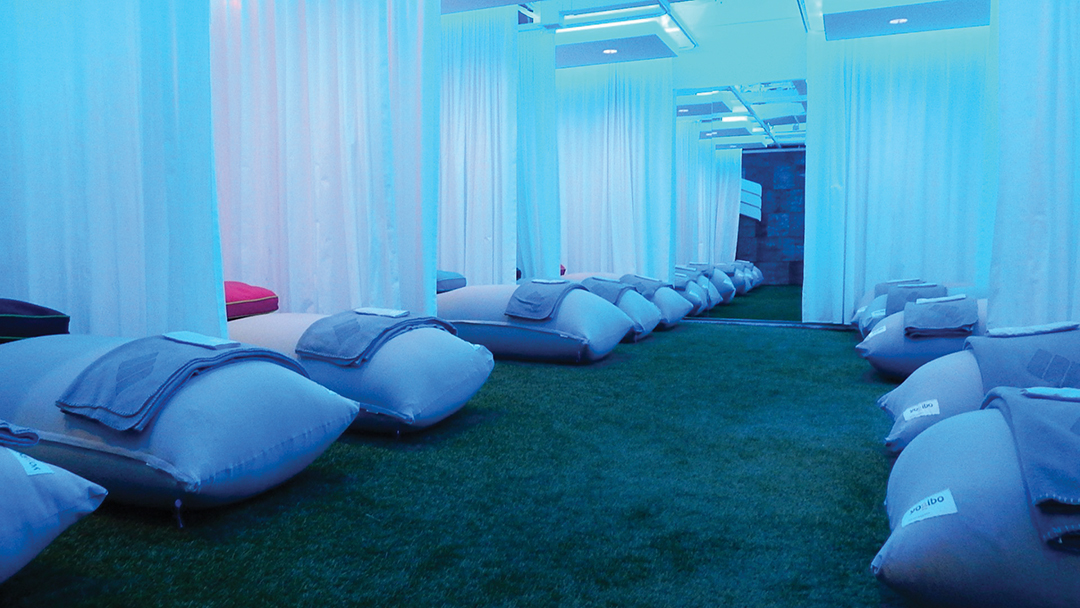
recharj – D.C. meditation room and class.
Photos courtesy recharj
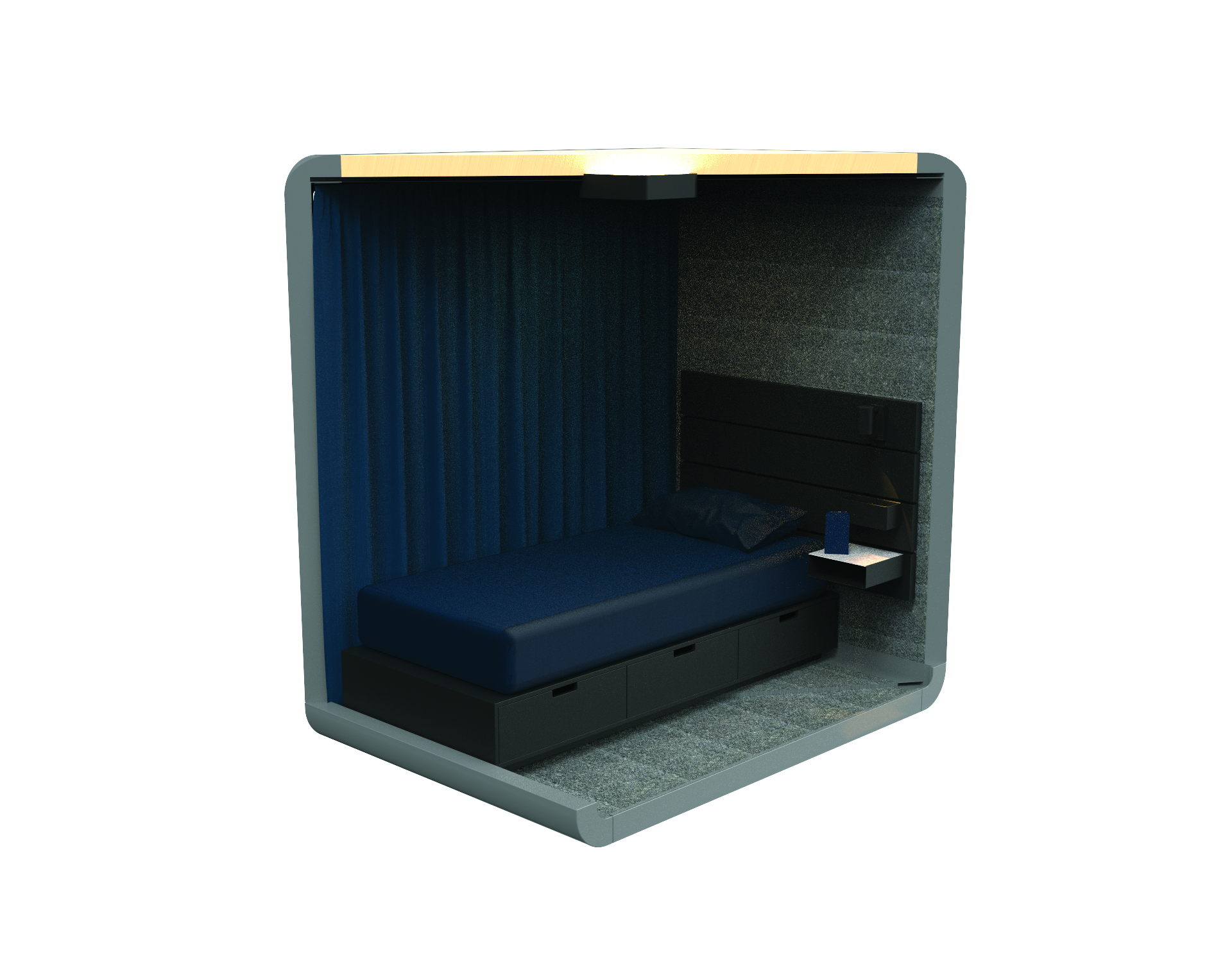
Pop & Rest sleep pod for napping.
Photo courtesy Pop & Rest.
The final sense, of touch, goes a step further, as all suites include an organic, locally sourced mattress, linens and sheets, and each room is painted with toxin-free paint. All of these inclusions are accompanied by a full-service concierge who will guide customers through the experience and help them on their wellness journey
According to Chanhsavang of Zen – Bar à Sieste, wellness is the future of humanity, a future he aims to advance with the Siesta Bar, which combines technological and traditional means of treatment for sleep deprivation. For nap services, customers can choose from a luxurious memory foam retreat, a zero-gravity massage chair or a Shiatsu bed; for aiding in relaxation and overall wellness, complimentary services include massages, virtual-reality meditation and even a fish spa.
As a meditation studio, recharj has been offering premier restorative practices to help clients, which includes the use of power naps. According to Hernandez, during open hours these power nap sessions are curated to be 25 minutes long and offered in large Yogibo chairs, a favorite for many. “A client once described them to me as if you’re laying down in a cloud,” Hernandez says, which only adds to the whole-body experience.
Binaural beats are also incorporated into the nap session, a type of music melody that registers at different frequencies that are meant to relax your body and get it ready for sleep. Overall, the studio aims to bring a sense of relaxation as well as mindfulness through meditation to its clients. “We offer workshops about mindful leadership, mindful communication and mindfulness in general,” Hernandez says, which in turn helps clients learn ways to de-stress and regain focus on whatever tasks lay ahead.
Unlike the typical fad that comes and goes, wellness is rooted in a deep need for comfort and stability. As we write this, we’re in the midst of a public health crisis, and brick and mortar locations may not be open. But there are ways to implement the wisdom of these businesses from your own home. Studios like recharj continue to offer online meditation classes, in an effort to keep a consistent schedule that is based solely on keeping well. And though the future is uncertain, businesses like Pop & Rest, Nap Bar and Zen – Bar à Sieste continue to work and create solutions for customers, from promoting online educational sessions and tips to developing applications, products and services for when businesses are fully up and running.
“Wellness is not just a fashion, but a fundamental trend in our societies,” Chanhsavang asserts. “Hopefully the nap services and related businesses will become a game-changer in the hospitality industry.”
*Source: NASA conducted a study on sleepy military pilots and astronauts and found a 26-minute nap increased productivity by 34 percent and alertness by 54 percent.
Surrounded by the natural beauty of the pink himalayan salt blocks, salt spa visitors are encouraged to focus on their breathing as they embrace the benefits of the salt-infused air.
Dry salt therapy, or halotherapy, is a practice that originated centuries ago in the natural salt mines of Eastern Europe. Dry salt therapy is thought to provide an array of health benefits, helping with stress, anxiety, and depression, as well as skin conditions, arthritis and asthma.
“People are seeking more natural and alternative ways to feel better and relieve pain,” says Maryann Corcoran, co-owner of the Corcova Salt Spa in Genesee County, Michigan. “They are tired of taking pills and getting little or no relief and often additional ailments due to the side eff ects from their medication.”
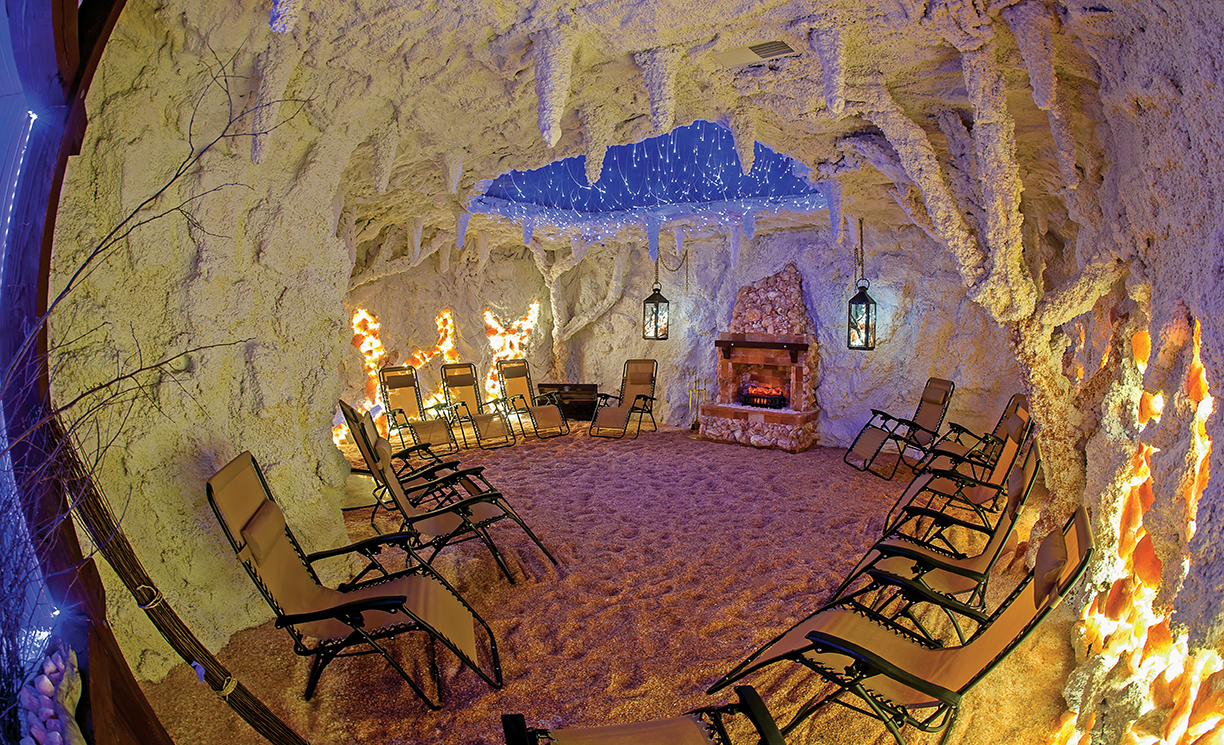
Royal Salt Cave & Spa. Photo by Rafal K Gdowski.
“With medications you have to worry about side effects and short- or long-term effects on the body, but with salt therapy, there’s none of that. It’s simply a healing process that also throws relaxation into the mix,” adds Izabela Przybyla, founder and owner of the Royal Salt Cave & Spa in Frankfort, Illinois.
A man-made salt cave reproduces the climate of a natural salt mine. Surfaces are covered with layers of himalayan salt and saline aerosol is
dispersed into the room to create a space that feels authentic.
“The salt cave is climate-con-trolled to recreate a micro-climate as if you were within a salt mine,” says Shannon Coppola, founder of Montauk Salt Cave in New York City. “Salt is super sensitive to heat and humidity. There is a very intricate climate-control system to ensure that the air is always moving and super clean to maximize the benefits.”
Chairs, whether recliners or loungers, are added for comfort and relaxation, while dim lighting is used to recreate a true cave-like experience.
One of the most well-known salt mines is the Wieliczka Salt Mine in Poland, which draws tourists from around the world. It was also the fi rst location to off er salt-related health treatments. In the 1830s, Dr. Feliks Boczkowsk began off ering salt baths when he began to notice the surprisingly good health of the local salt miners.
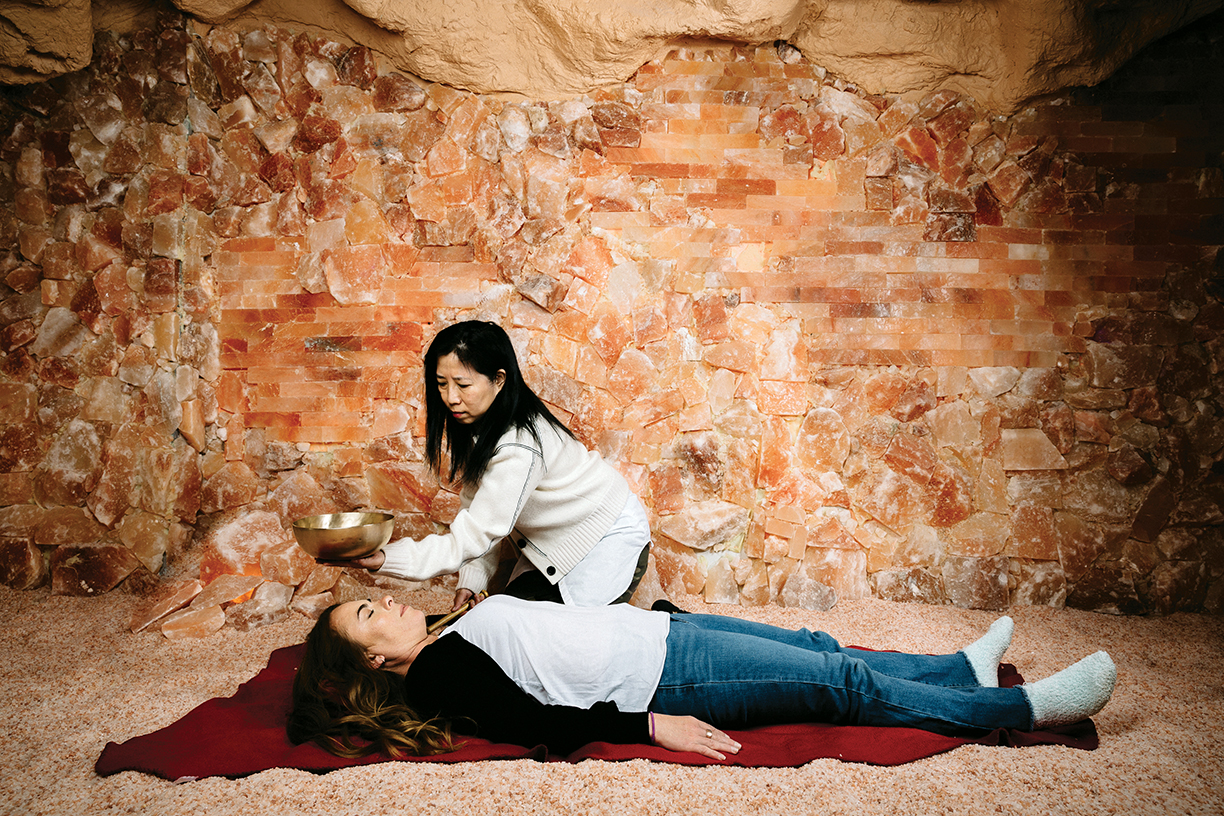
Mei Leung, a holistic healer at Montauk Salt Cave, uses Reiki and sound to help visitors feel calm and balanced. Photo by Mike Vitelli.
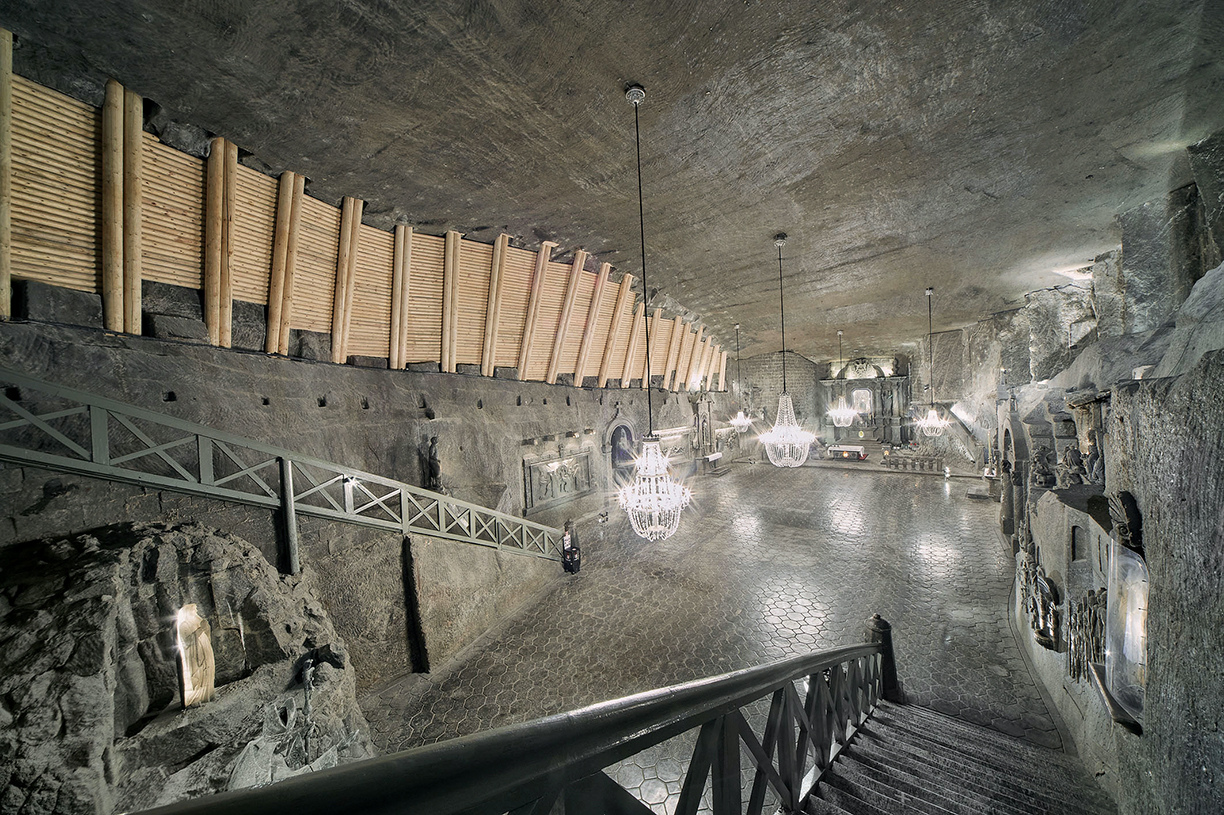
The historic Wieliczka Salt Mine began offering salt-related health treatments in Poland as early as 1830. Photo by Ryszard Tatomir.
United States spa owners draw inspiration from Wieliczka Salt Mine, which has played a pivotal role in the rise of halotherapy. Cheryl Krouse and Jim Fittante, owners of the Samana Salt Spa in Lewiston, New York, traveled to Poland to gain a deeper understanding of the ancient form of wellness therapy. “We were able to see firsthand how the Wellness Center in the salt mine has been operating since the late 1800s,” explains Krouse.
Another notable salt mine in Eastern Europe is the Salt Mine Berchtesgaden, which is the oldest active salt mine in Germany. The mine attracts visitors, who are able to tour the mine and learn of its history while taking in views of the natural salt. “Enjoy the underground, starting with a train ride. Go down two long slides (which were used by mine workers in former times), take a raft ride over a mystic salt lake, and see traces of colored salt in the rocks,” says Peter Botzleiner-Reber, tourism manager for Salt Mine Berchtesgaden.
“I’ve known about salt therapy my whole life, since I’m originally from Poland. Salt caves have been popular in Europe for more than 70 years,” says Przybyla, who has seen the trend grow in the U.S. in recent years. “There’s no doubt in my mind that salt therapy is on the rise simply because it’s relaxing and beneficial to your health.”
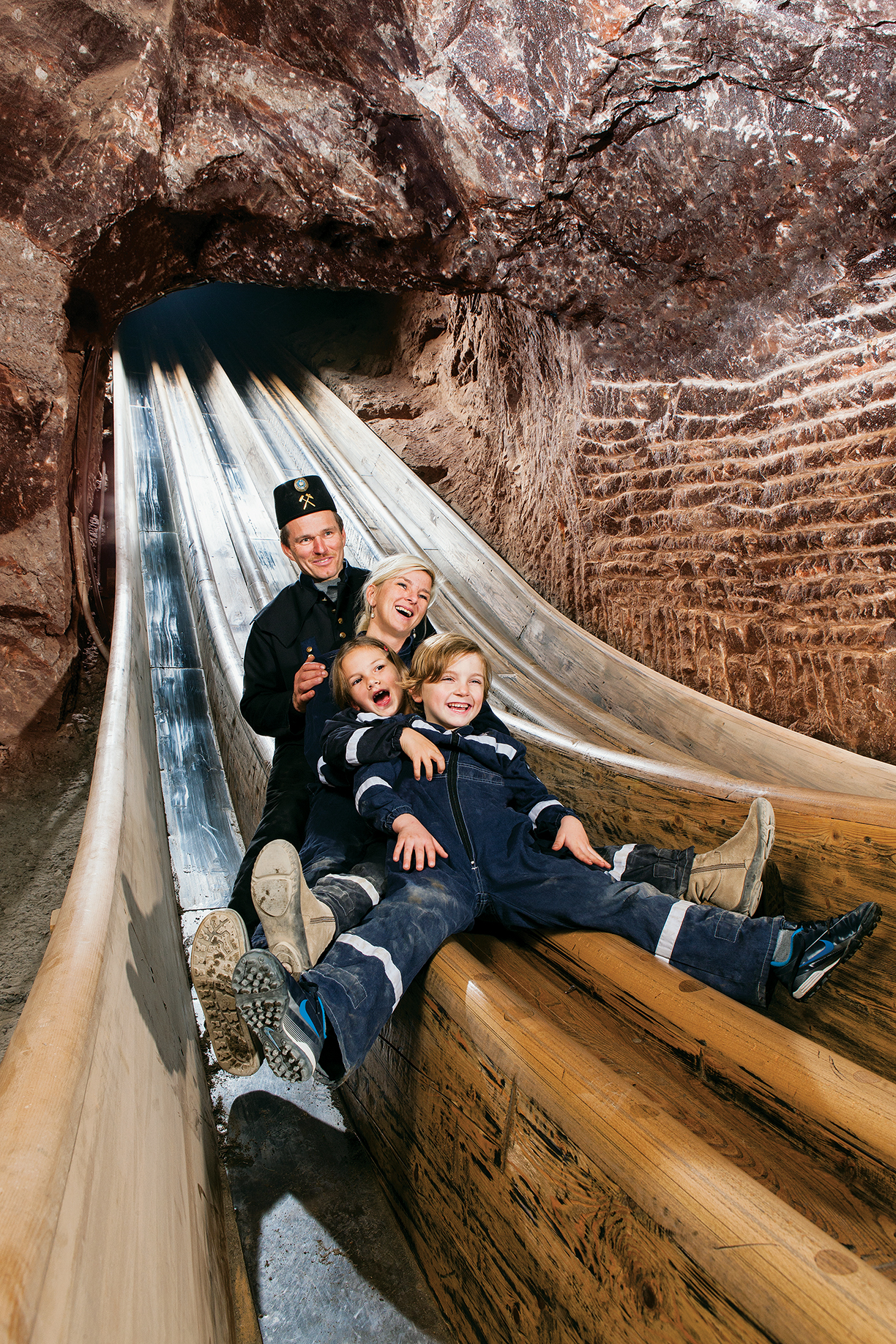
Salt Mine Berchtesgaden is home to two long slides, which are surrounded by salt and were once used by mine workers. Photo by Georg Grainer Fotografie, courtesy of Salt Mine Berchtesgaden, Südwestdeutche Salzwerke AG.
The salt used in halotherapy is antiviral, antibacterial, anti-inflammatory, antifungal, and antimicrobial, according to Shannon Coppola. To fully take advantage of its ben-efits, Coppola suggests a 30- to 60-minute session in a salt cave at least once a week — preferably two times a week.
While most salt therapy sessions are a solo experience, Montauk Salt Cave also offers guided sessions with experienced healers. The healers elevate the typical salt cave experience — whether it’s promoting peace and tranquility through the use of tarot cards and astrology, a meditative soundscape, or Reiki therapy.
Luxury developments and real estate properties are also experimenting with the benefits of halotherapy. “There has been an increase in awareness of the benefits of halotherapy and in turn a rise in demand for locations to off er it,” says Alison Howland, vice president of wellness programs and resourcing at Amrit Ocean Resort & Residences in Riviera Beach, Florida.
The luxury development will soon debut its inhalation halotherapy chamber, which will off er residents the opportunity to experience salt therapy from the comfort of their homes. “The concept of luxury is changing. No longer is standardized luxury acceptable. Personalized luxury is the new standard,” says Howland of the develop-ment’s decision to open the salt chamber.
For luxury spa owners, the choice to open a salt cave is often much more personal.
“My daughter was my biggest inspiration for opening this business,” says Przybyla. “She struggles with asthma and severe allergies, which tend to act up a lot seasonally. I wanted to help get her healthier in a natural way.”
Coppola echoes a similar message. “Ultimately, our inspiration for opening the spa was our son,” she says. Coppalo and her husband discovered salt therapy in 2014 when searching for a cure for their son’s respiratory issues. “We had tried everything under the sun — nebulizers, chambers, adenoidectomy, tonsillectomy, Flonase, Nasonex, and more. A friend suggested salt therapy. After one session, he slept through the night for the first time at 4 and a half years old,” says Coppola.
With Spring just around the corner, now is the perfect time to swing into health and wellness. Envisioning and reflecting on your health goals is a breeze when your home supports and sustains your best self. Wellness themed homes are the perfect balance between comfort and functionality, blurring the lines between a relaxing, replenishing vacation and a regular Thursday night.
Christie’s International Real Estate showcases five beautiful home retreats that are sure to make returning home after a long day as anticipated as jetting off to a luxurious retreat.
Contemporary Mountain Retreat in Santa Fe, New Mexico
Nestled en route to the Santa Fe Ski Basin and miles of hiking/biking trails, this home makes wellness a top priority. Melt stress away in the private spa with a professional-grade gym and indoor hydrotherapy SwimEx pool, and wind down after a long day in the patio hot tub.
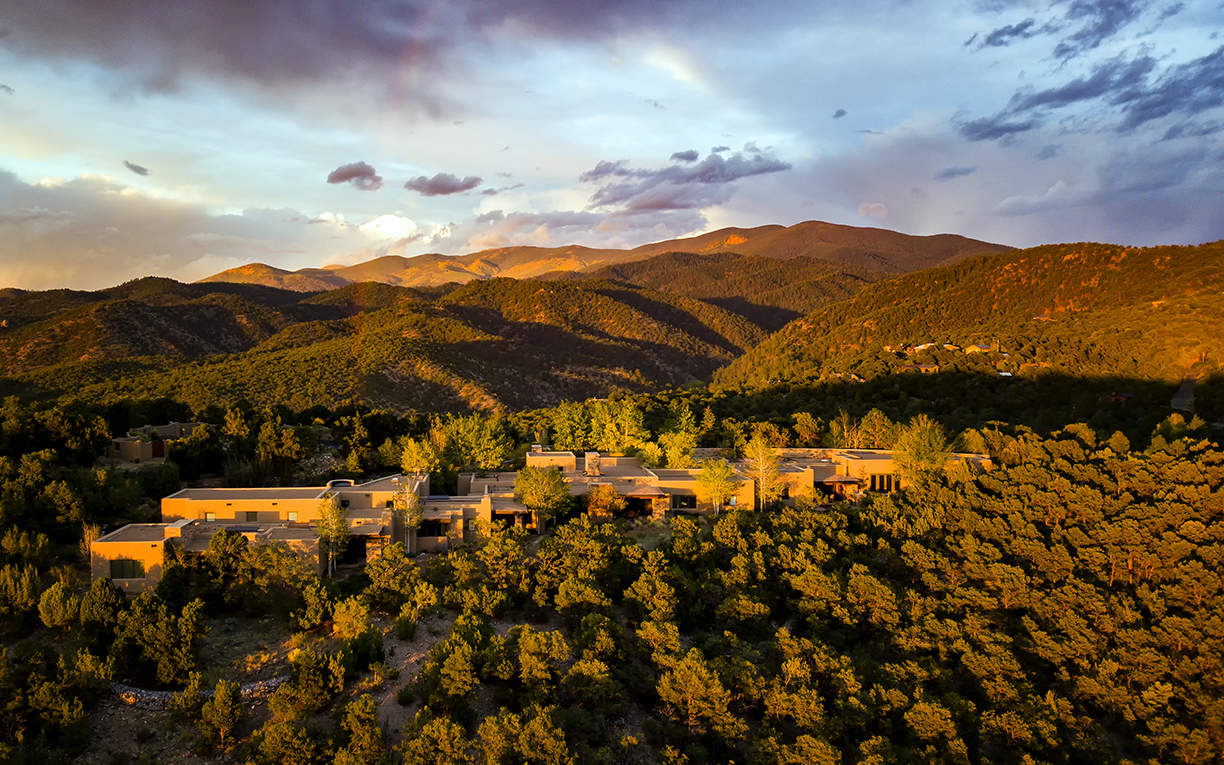
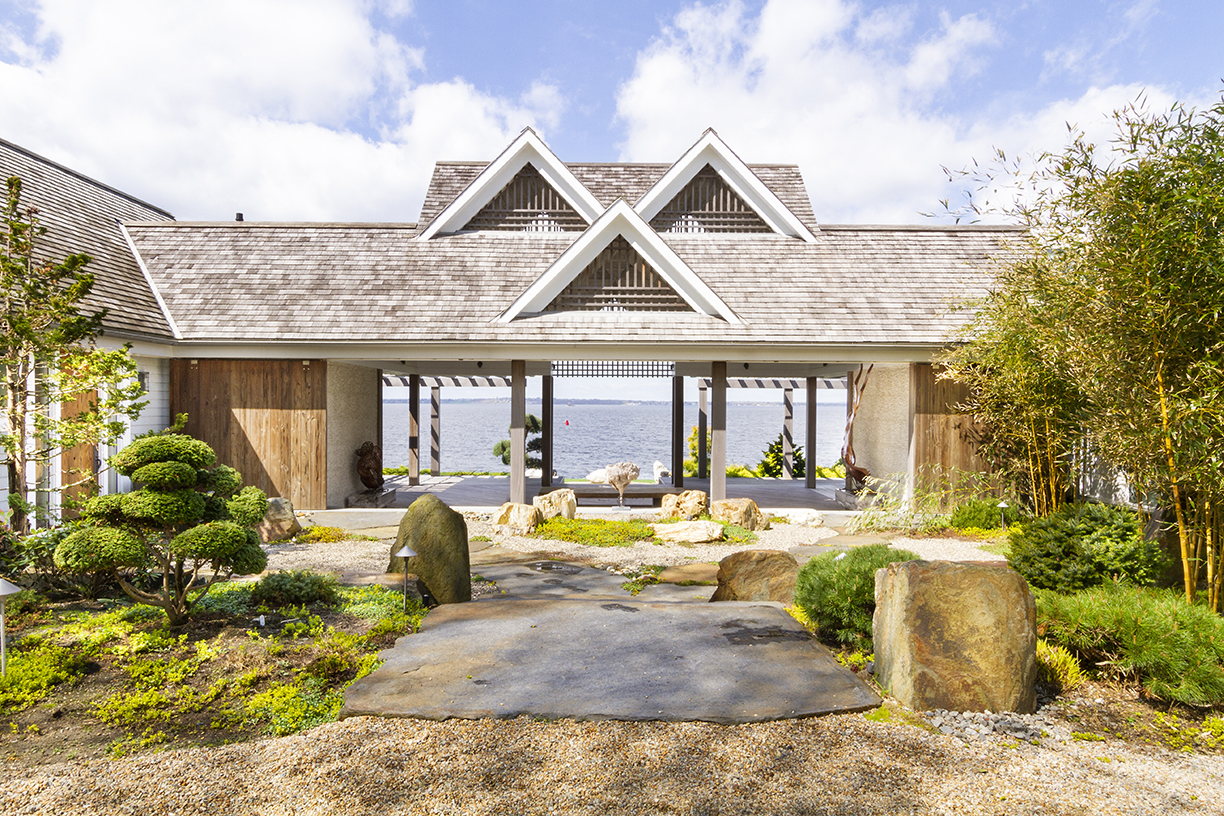
Shangri-La on Narragansett Bay in Bristol, Rhode Island
This idyllic waterfront estate was crafted for the outdoor enthusiast and molded for relaxation. Enjoy a sunset walk along the private beach, or evening swim in the heated infinity pool. A serene koi pond invites quiet meditation and reflection. Taking it easy at this quiet seaside retreat is a beach-lover’s dream come true.
Alhambra-Inspired Palace in Marrakesh, Morocco
Nestled in the Palmeraie oasis, this home features designs in the tradition of ancient Moorish baths, and includes an authentic hammam, beautiful relaxation area, a spa, and lounges. Outdoors, guests and residents can relax in the rose and vegetable gardens, a pool area with pool house, or tennis court.
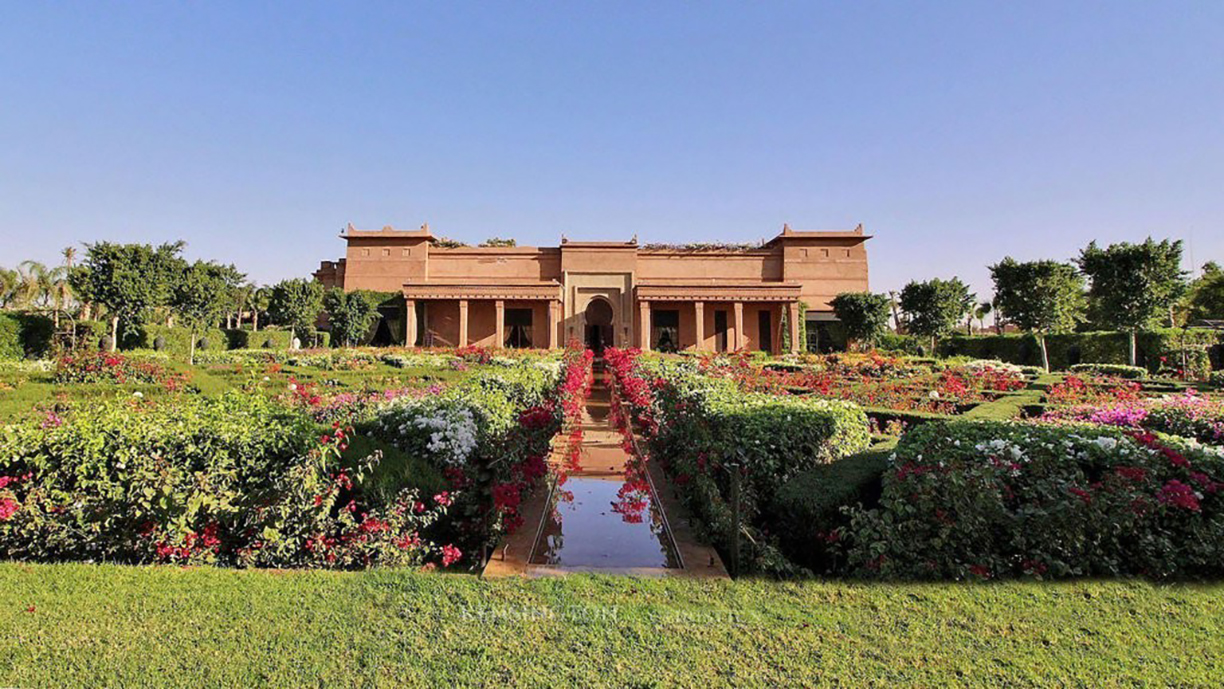

Hot Spring Estate in Ashigarashimo-Gun, Japan
This home is set in one of Japan’s ancient hot spring resorts, Yugawara. The home’s lavish spa amenities include both indoor and outdoor onsen (hot spring) baths, celebrating Yugawara’s rich history as a prominent hot spring, and providing the utmost relaxation.
River Oaks Estate in Houston, Texas
This estate offers ample opportunity for both fitness and relaxation. Achieve healthy eating goals in the custom-designed chef’s kitchen, and exercise in the professionally equipped gym and sauna housed on the top floor. Outside, a pool, tennis court, and practice golf course make fitness and wellness goals a reality.

Photos and featured image courtesy of Christie’s International Real Estate
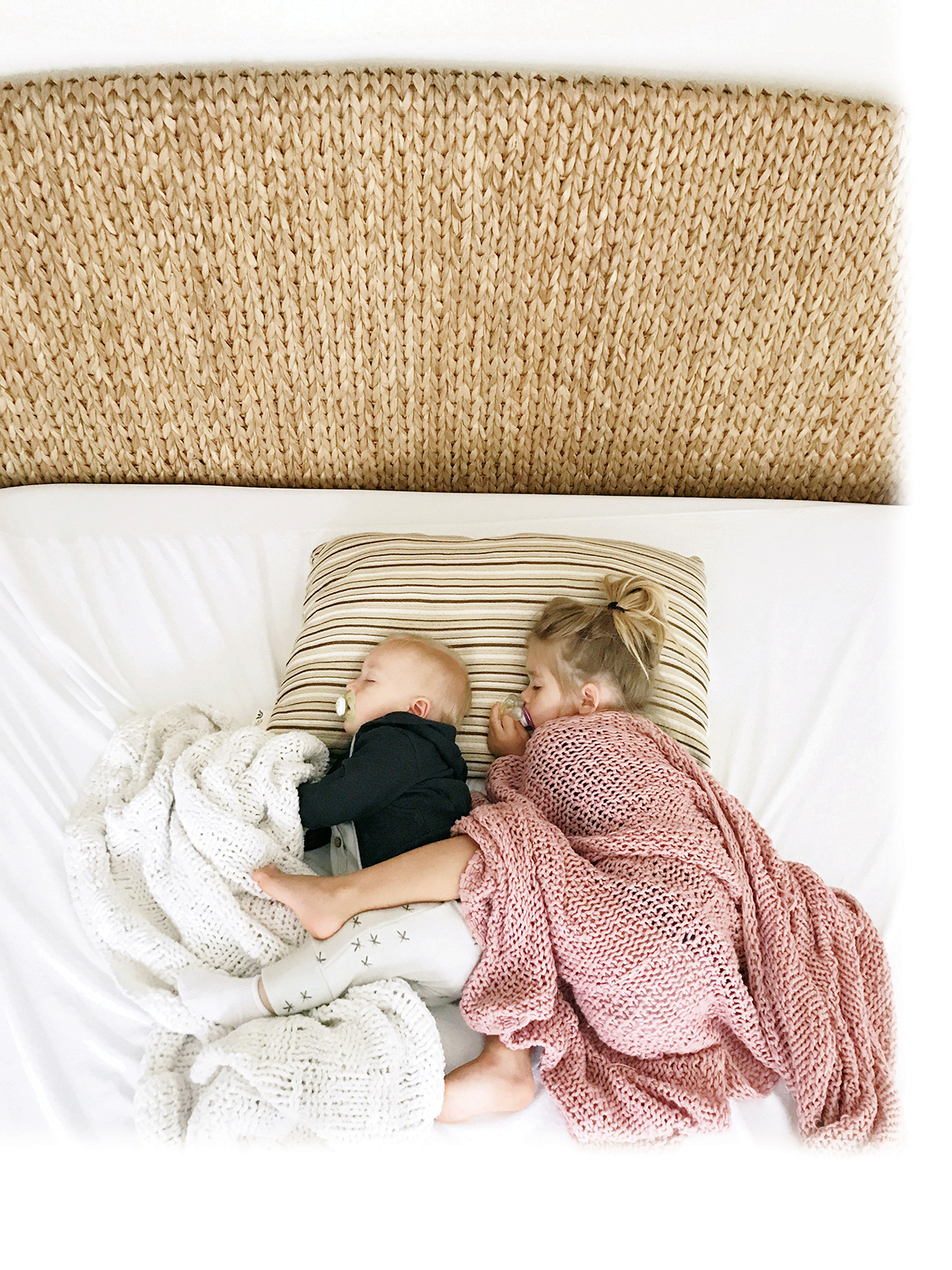
Organic non-toxic mattresses and bedding offer a luxury that will help you rest a little easier.
We spend approximately one-third of our lives sleeping. Why not choose the very best surfaces on which to sleep?
We take special care of the food we consume and the products we use but our mattresses and bedding are often overlooked. In reality, they can largely affect our overall wellbeing. Based on the tips, tricks, and articles scattering the internet, we are desperate for a good night’s sleep, and with good reason. As we overload our schedules and take on more responsibilities, the need for a solid night of rest continues to grow, just as the importance to rejuvenate and reset does.
According to Jack Dell’Accio, CEO and founder of Essentia, synthetic mattresses and bedding introduce low-level toxins into our environment, which our central nervous systems continuously need to fight while we rest. The chronic exposure to the harmful chemicals found in synthetic mattresses and bedding can interfere with our sleep, which can affect everything from productivity and mood to weight loss and eating habits.
Mark Abrials, co-founder and CMO of Avocado Green Mattress says, “Countless studies show that the chemically treated materials commonly used in our manufacturing and building processes negatively impact human health.” The toxins slowly release over time, all the while contaminating our environment “through the processes of volatilization (off-gassing),
abrasion, leaching, and oxidation,” according to Abrials.
Unfortunately, most people “tend to not realize the hidden dangers hiding in synthetic mattresses that can cause health issues over time,” says Dell’Accio. Essentia and other companies are handcrafting mattresses, pillows, bedding and more with materials that are safer and environmentally responsible.
White Lotus Home offers mattresses and bedding that are handcrafted from organic cotton and other chemical-free materials. Essentia uses a natural memory foam that is made from hevea milk — the white sap from the Rubber tree — and Global Organic Textile Standard (GOTS) certified organic wool. While Avocado and Happsy avoid polyurethane foams and harsh flame retardants. Dedicated to a good night’s sleep, these companies are improving the environment and sleeping habits.

White Lotus Home
whitelotushome.com
White Lotus Home proves its dedication to healthy living by creating safe, chemical-free hand-crafted mattresses, duvets, pillows, toppers, and more. Wool latex, organic cotton, green cotton, and other materials make these products a healthier choice for consumers. Marlon Pando, the president of White Lotus Home — a company dedicated to creating sustainable and healthy products — says “our integrity and craftsmanship are the main reasons why we have been in business since 1981. We are experts in handcrafting mattresses, pillows, and bedding from the finest fibers on Earth.”
Photo courtesy of Lotos Homes
Avocado
Avocadogreenmattress.com
The Avocado Green Mattress is beaming with several certifications and standards, such as GREENGUARD Gold Certified, GOLS organic certified latex, and OEKO-TEX Standard 100 certified latex that ensures its mattresses, bedding and more are reliable products. “We follow a farm-to-bedroom approach when manufacturing our organic mattresses,” says Abrials. “Ours is more sustainable and responsible than the conventional alternative and is truly
built-to-last.”
Photo courtesy of Avocado Green Mattress
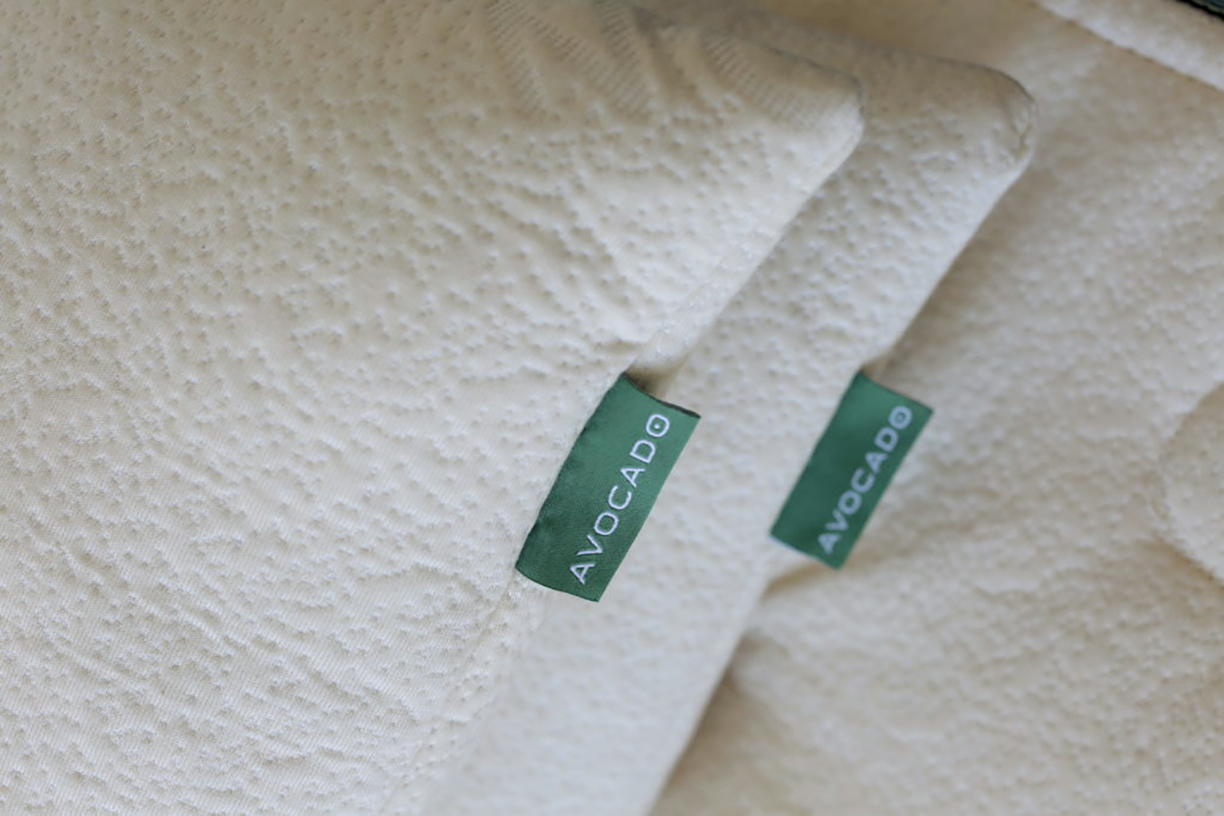
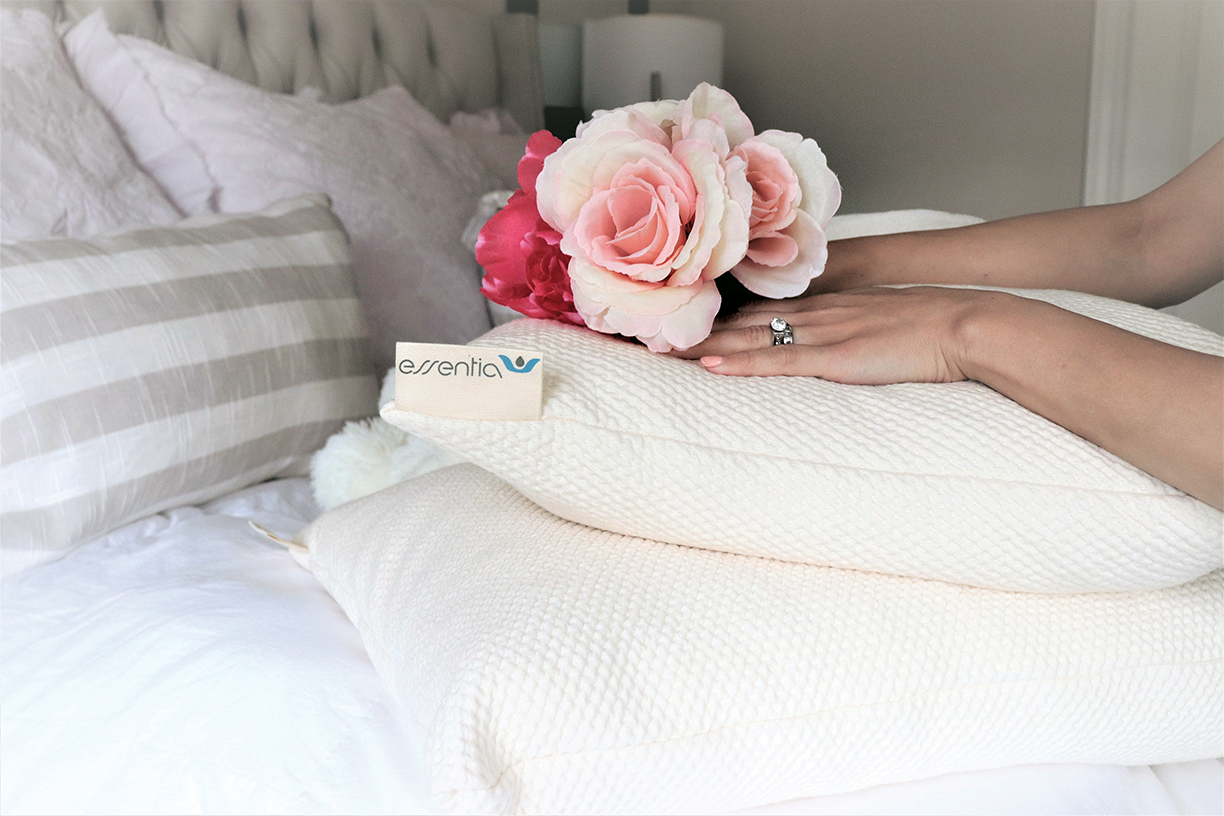
Essentia
myessentia.com
Essentia products are making a difference even while we sleep. The company offers a variety of mattresses, pillows, and accessories that are healthier for the average person, but with options that also cater to athletes and children specifically. “Essentia is completely uncompromising. Our products don’t just focus on being natural, our biggest plus is performing for the sleeper. This means truly helping you rest and recover from your daily grind and waking up more refreshed,” according to Dell’Accio.
Phots courtesy of Essentia
This editorial originally appeared in The High End Fall 2019.
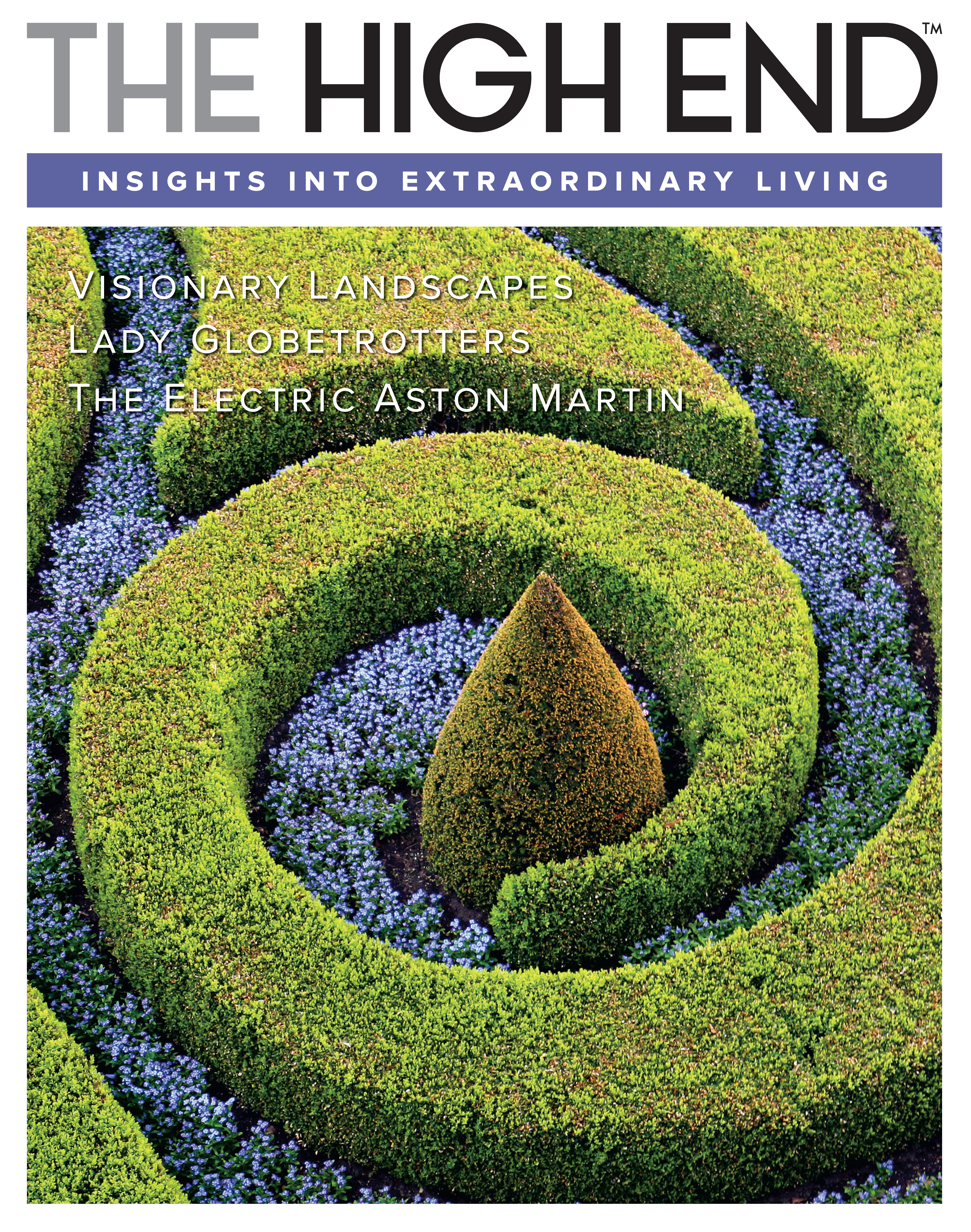
By the end of 2023, the aromatherapy industry is expected to hit over $4.3 billion, as reported by Reuters. And with candles being the quintessential form of aromatherapy, luxury homeowners are making room for this new form of wellness. Here are ways in which artisans and craftsmen are using candles to elevate the wellness industry once again.
Decreasing stress is one of the top priorities for people in demanding careers — and everyone is turning to scented candles for a natural and easy remedy in creating the perfect escape from the pressures in the world. Heating and Plumbing’s wide variety of scented candles does just that. The “Herb Garden and Hops” candles generate a calm and peaceful atmosphere. Adding scented candles to various rooms in your home can help you relax and unwind after a busy day.
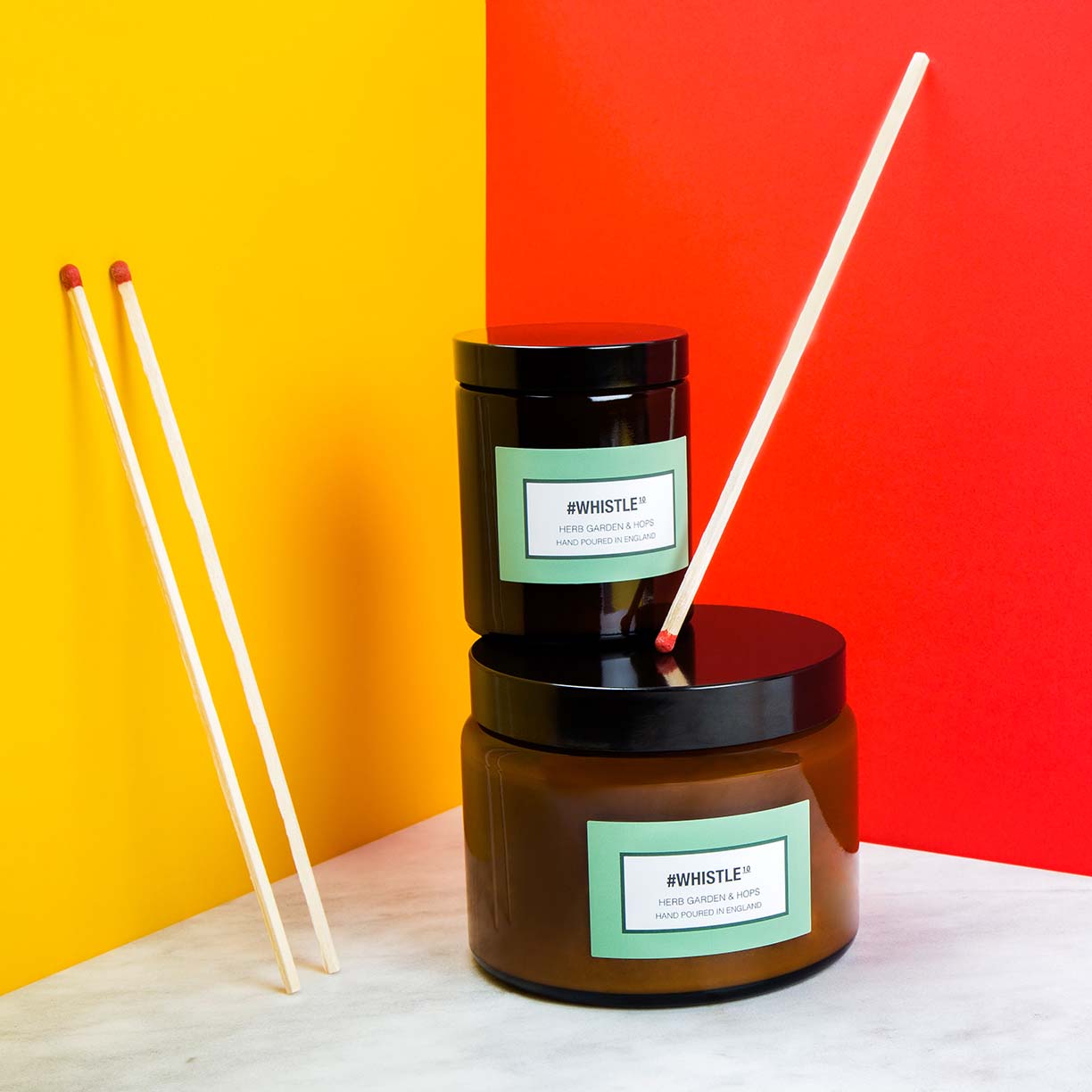
Photo courtesy of Heating & Plumbing
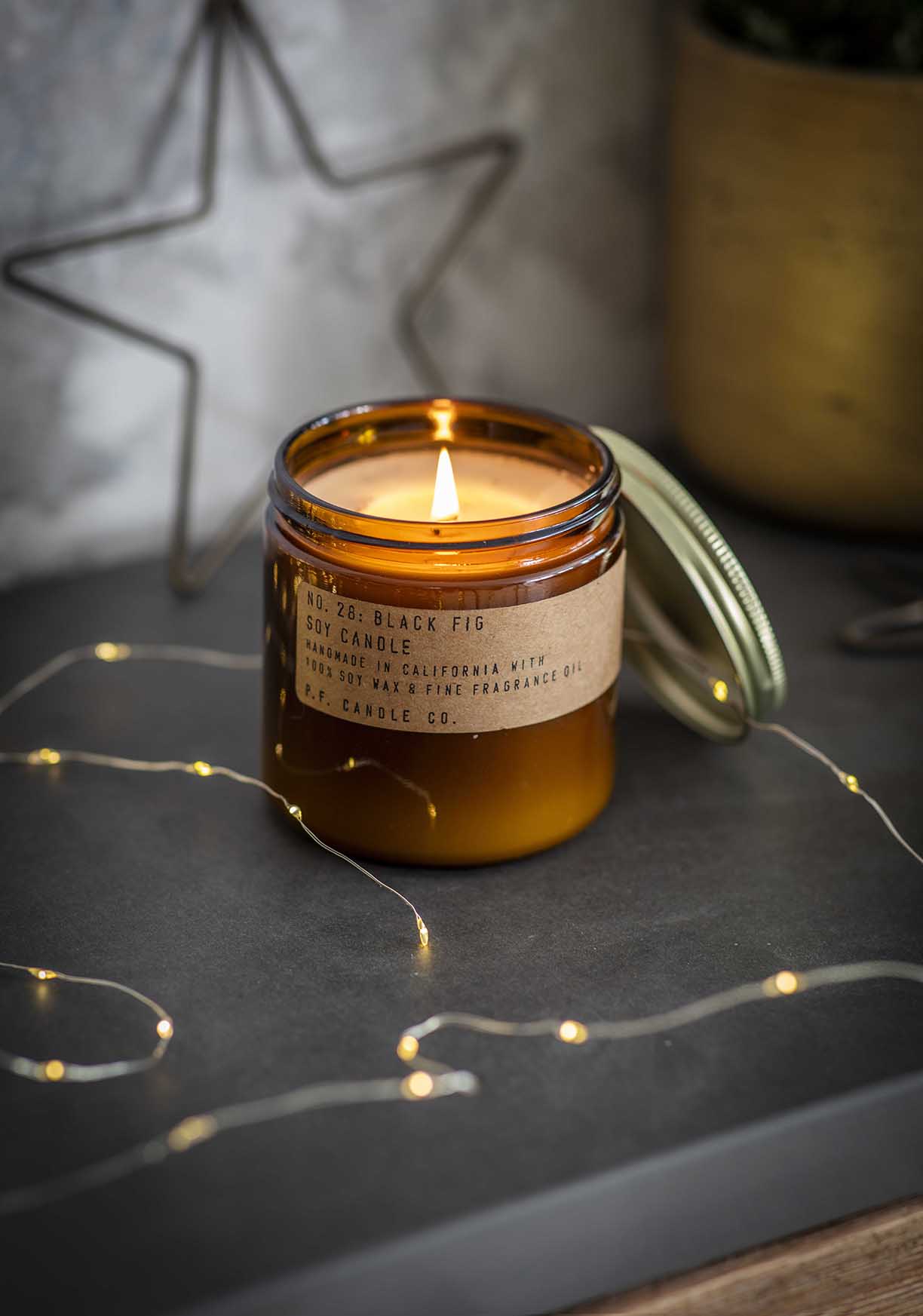
Photo courtesy of Garden Trading
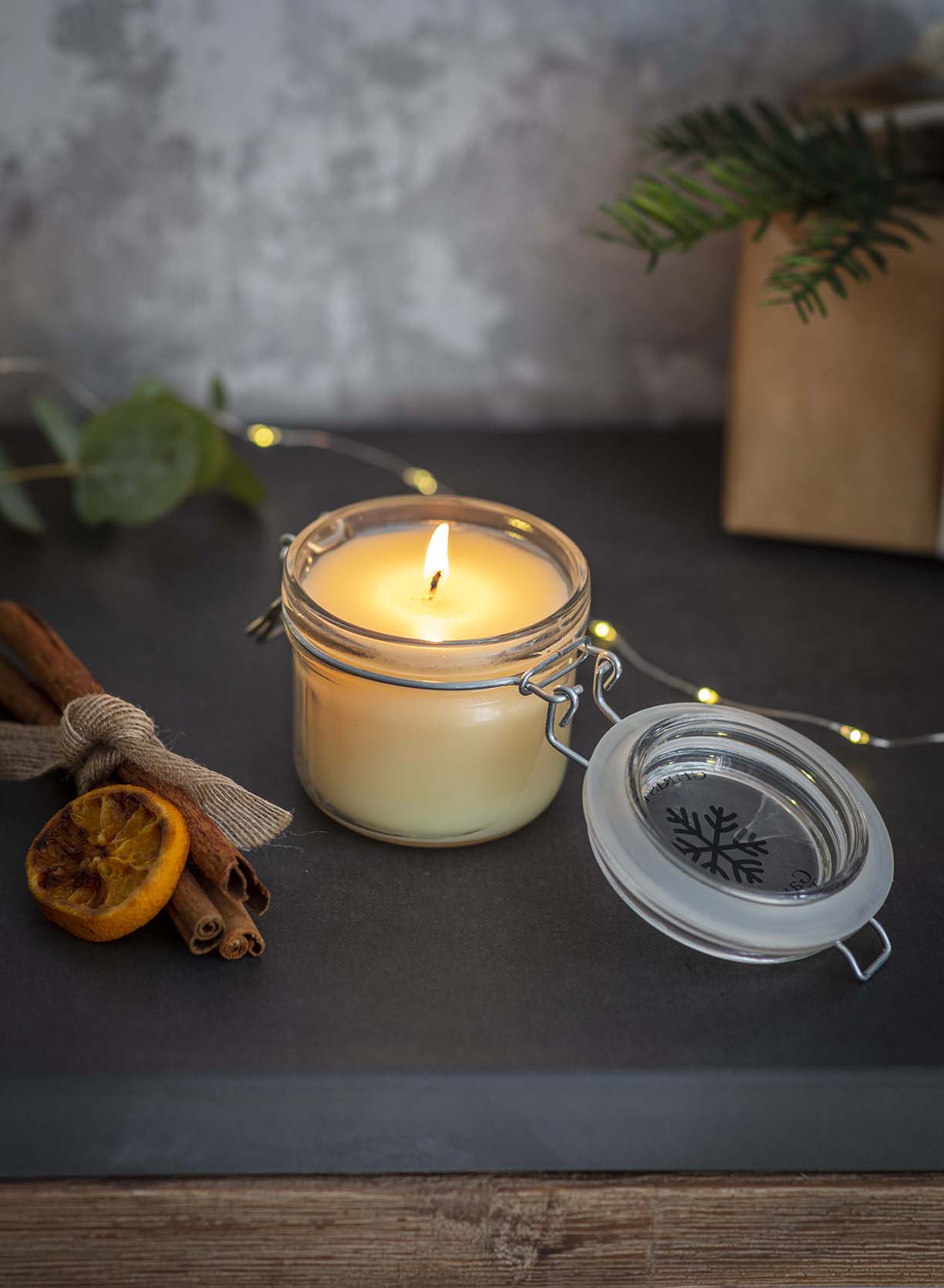
Photo courtesy of Garden Trading
Just in time for the holidays, make sure to include candles in your decorating process. They’re not only the top product in the wellness industry but, when styled right, can leave a festive impression. These scented candles from Garden Trading are the perfect design for the upcoming holiday season.
Buckley and Phillips Aromatics has also been one of the forerunners in the boost for candles in the wellness industry. With candles like these, decoration is key. Candle centerpieces work perfectly for the holiday or year-round decorations to brighten the atmosphere. Or, just have the candles by themselves for a simpler and more minimalist design. Either way, candles like these are sure to bring a calm and inviting mood to the space.
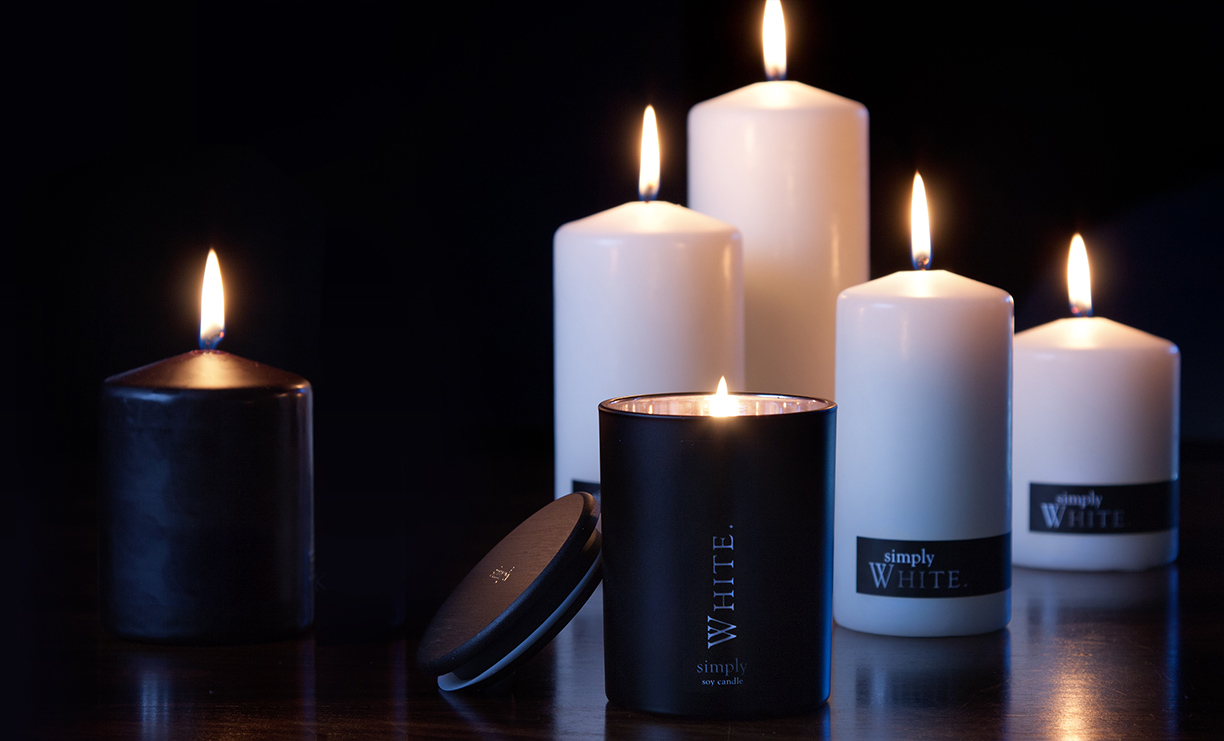
Photo courtesy of Buckley & Phillips Aromatics
No matter the lifestyle, wellness and the pursuit to live better has been a rising trend in today’s world. In 2018, Pinterest reported that searches for “self care” were up 140 percent year-over-year, with no mention of stopping. Recently surveyed by national paint brand Sherwin-Williams, homeowners and professional interior designers have also noticed this uptick in wellness and how it affects modern home design and décor. Looking to make your spaces “healthier”? Check out these recent trends to see how you can incorporate wellness into your home styling.
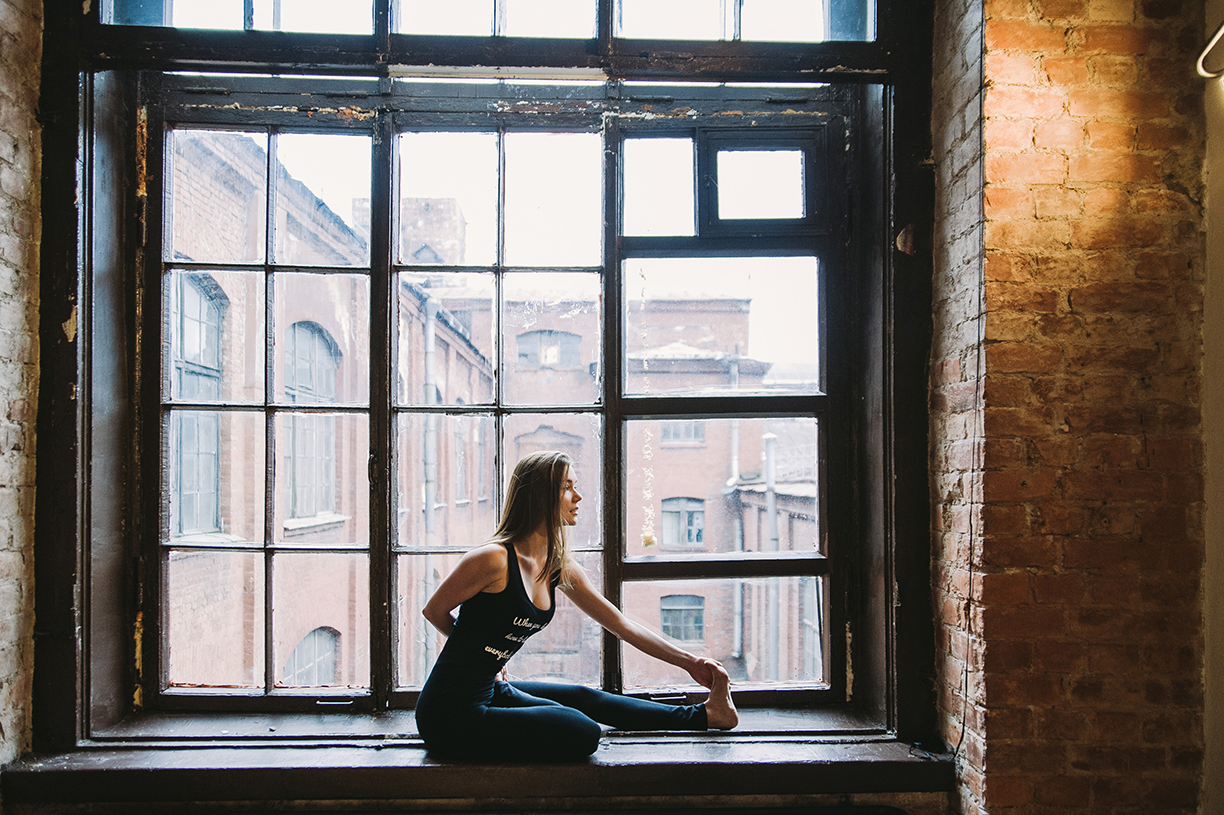
Self-Caring for Your Space
People are taking self-care beyond their body and into interiors. According to the survey, nearly 42 percent of designers say they have been asked to incorporate self-care into their designs. Twenty-nine percent of homeowners also take self-care into consideration when decorating their home.
The most popular way to bring wellness into a space also happens to be one of the easiest — natural light. Eighty-seven percent of designers use natural light to effortlessly reflect wellness.
Photo by Daria Shevtsova
Breathe It In
Improving indoor air quality is key for homeowners and designers looking to make changes. Over 54 percent of homeowners cite air quality as away they bring wellness into their homes, and 58 percent of designers use it as a tool to incorporate wellness.
Limiting volatile organic compounds, or VOCs, that are released through building materials is one of the best ways to improve air quality. This is done by using lower-VOC paints and other home improvement products that are sustainably sourced and have a low-carbon footprint.
Photo by Anamul Rezwan.
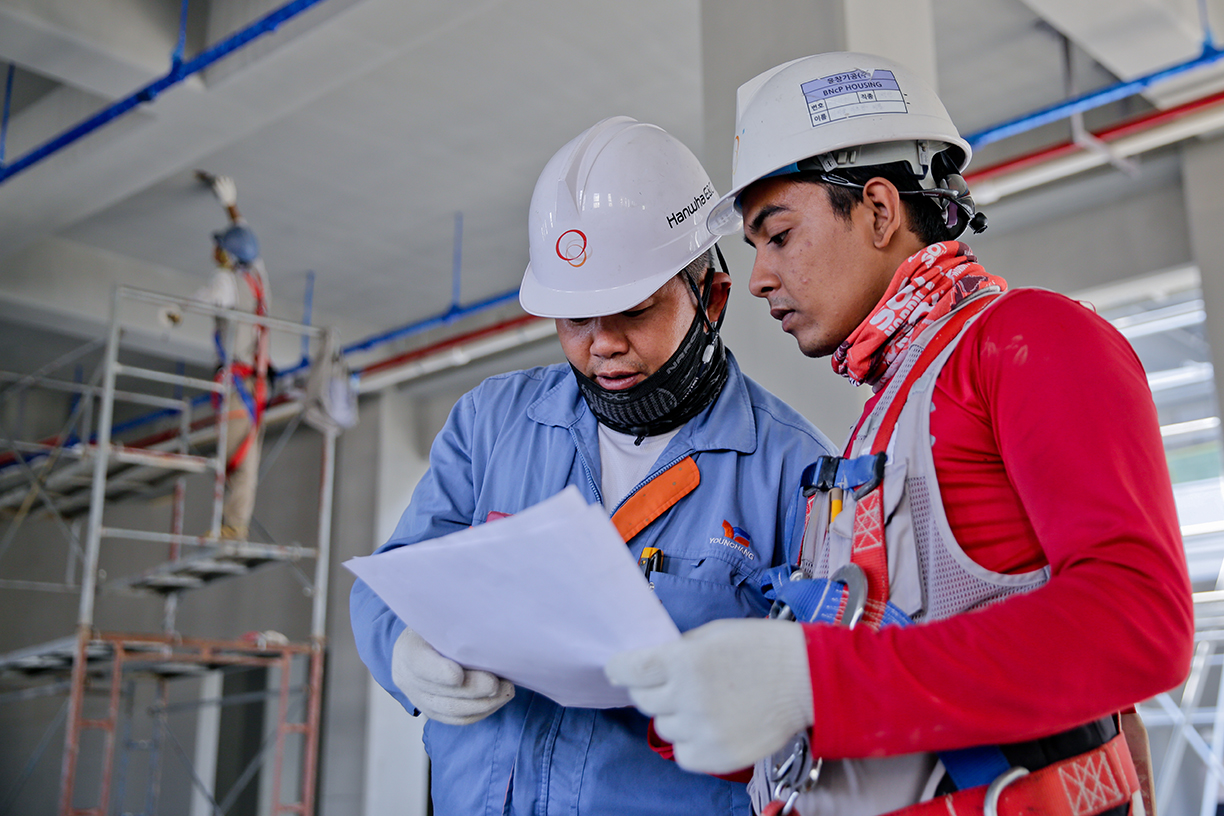
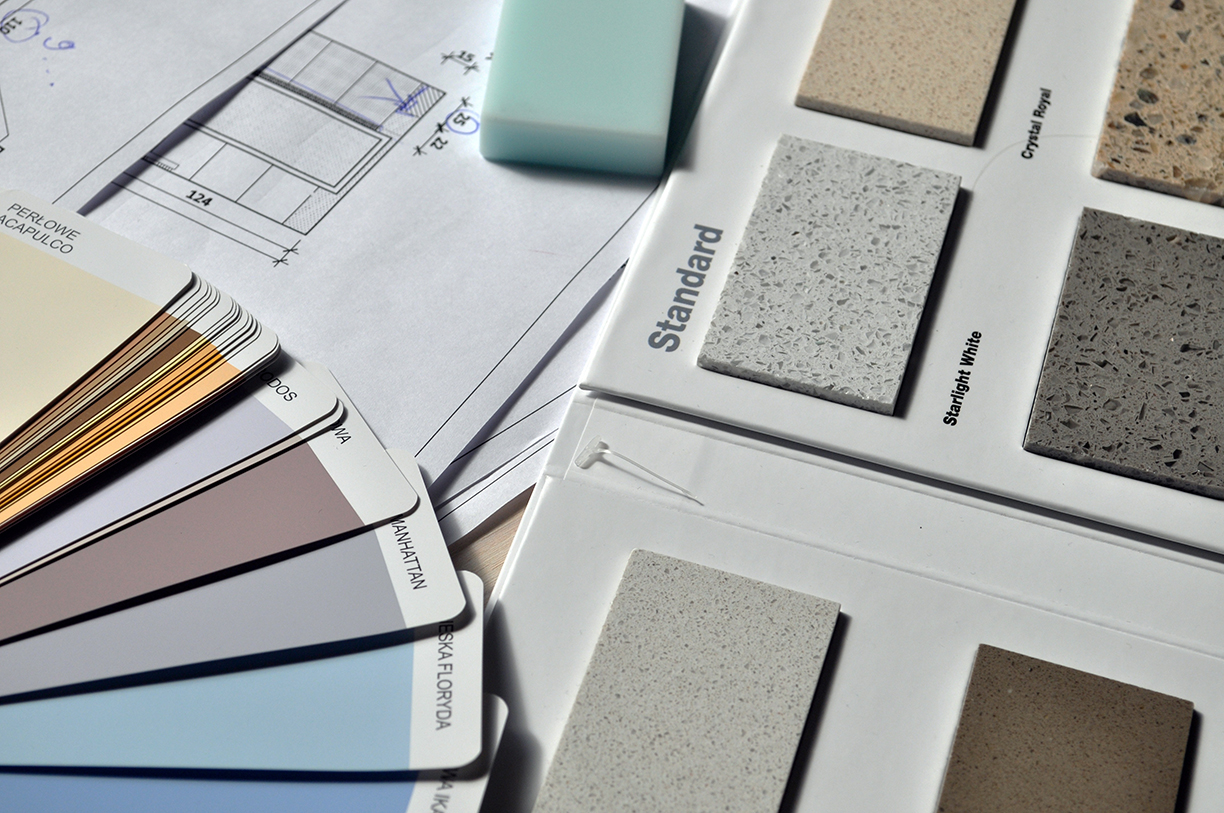
Color
When it comes to color, designers and homeowners do not see eye to eye on their top color choice that represents or stimulates wellness. Nearly 41 percent of designers say that green associates the most with wellness, whereas 34 percent of homeowners believe this color to be blue. Another popular color is white/gray, which 11 percent of designers and 18 percent of homeowners associate with the trend.
The color least likely to be associated with wellness? Red. Not a single designer and only 1 percent of homeowners reported that they associate this hue with wellness.
Photo by Pixabay.
Total Zen
In regard to specific spaces that are designed to promote wellness, homeowners different on their choice of which space was the best to achieve “total zen.” The top choices included a gym/fitness room (41 percent), a reading room (41 percent), and a greenhouse (38 percent). These choices differed from designers, who say that the most popular wellness rooms they’ve been asked to design in the past year include a reading room, a sauna/spa, a gym/fitness room, or a meditation room.
No matter the space, these insights into the wellness trends of today may better help you to find the wellness you crave from the comfort of your own home.
Photo by KatjaFiona.
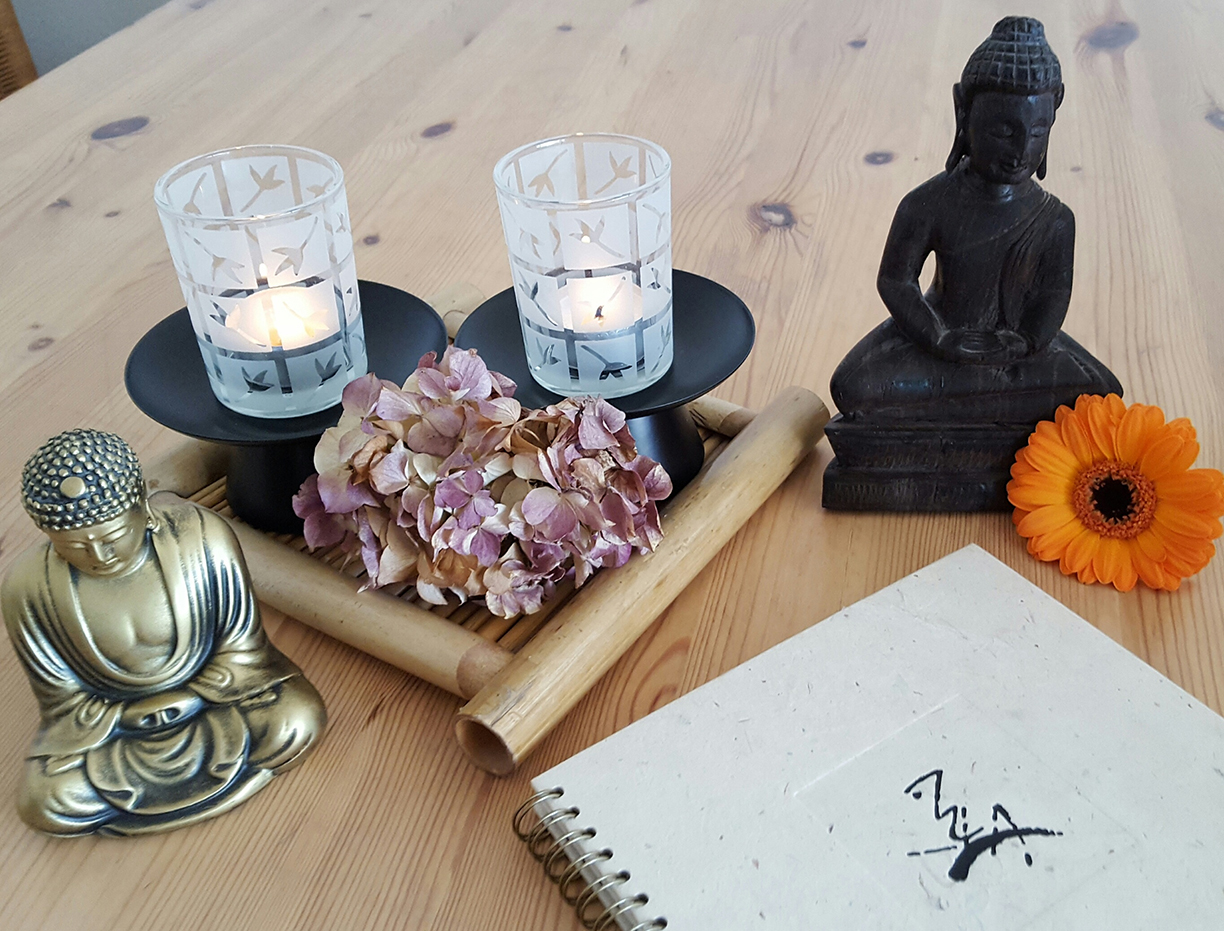
With the push for wellness-oriented spaces around the globe, interior designers are looking for different ways to incorporate this rapidly-growing industry to their styles. While including more plants and flowers into the home is known to brighten up the atmosphere, some designers are taking this theme to the next level. Here’s how:
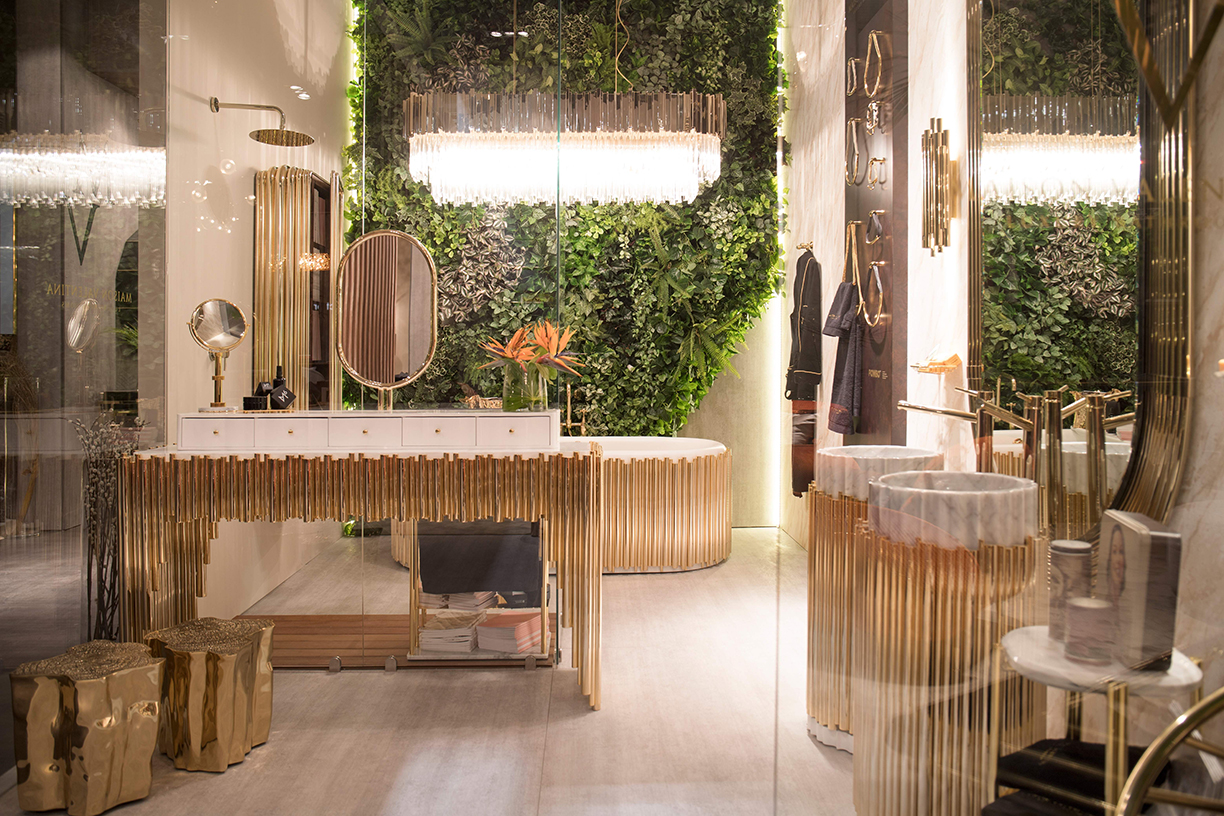
Photo courtesy of Maison Valentina
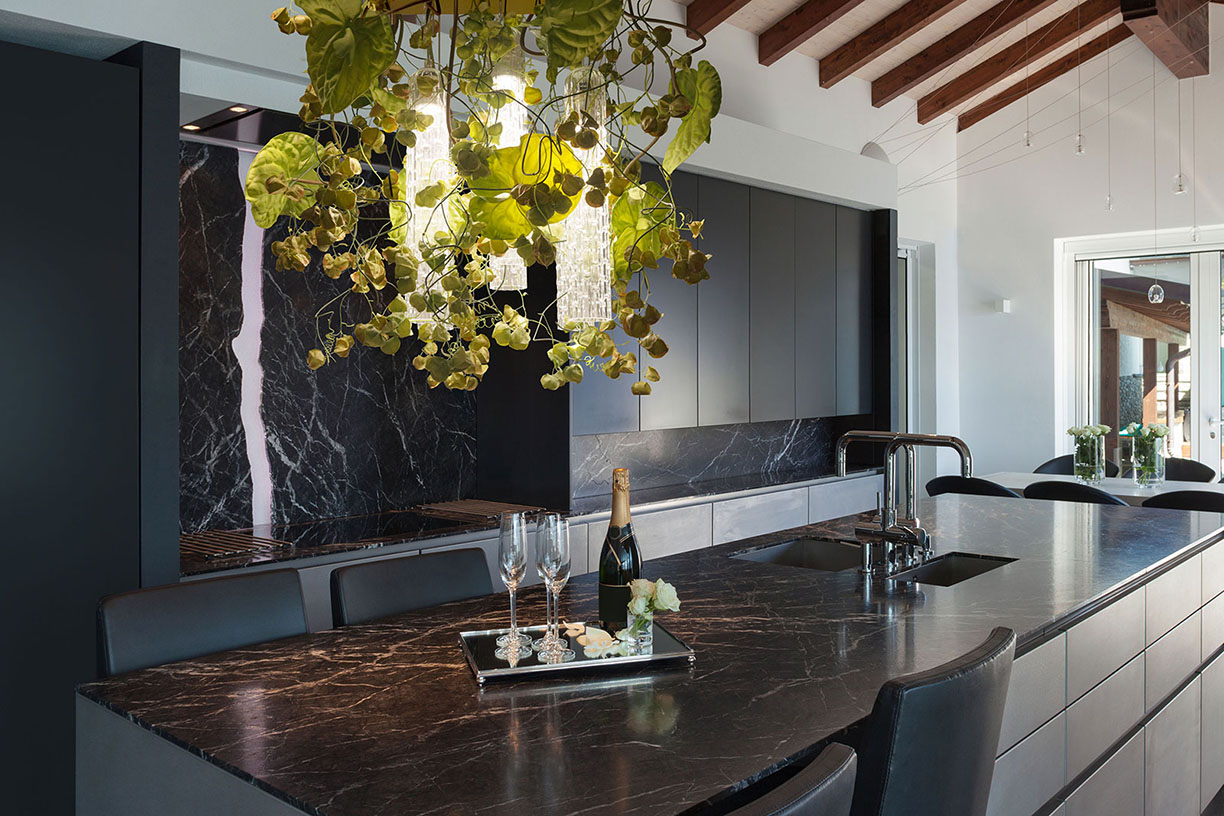
Photo courtesy of VG New Trend
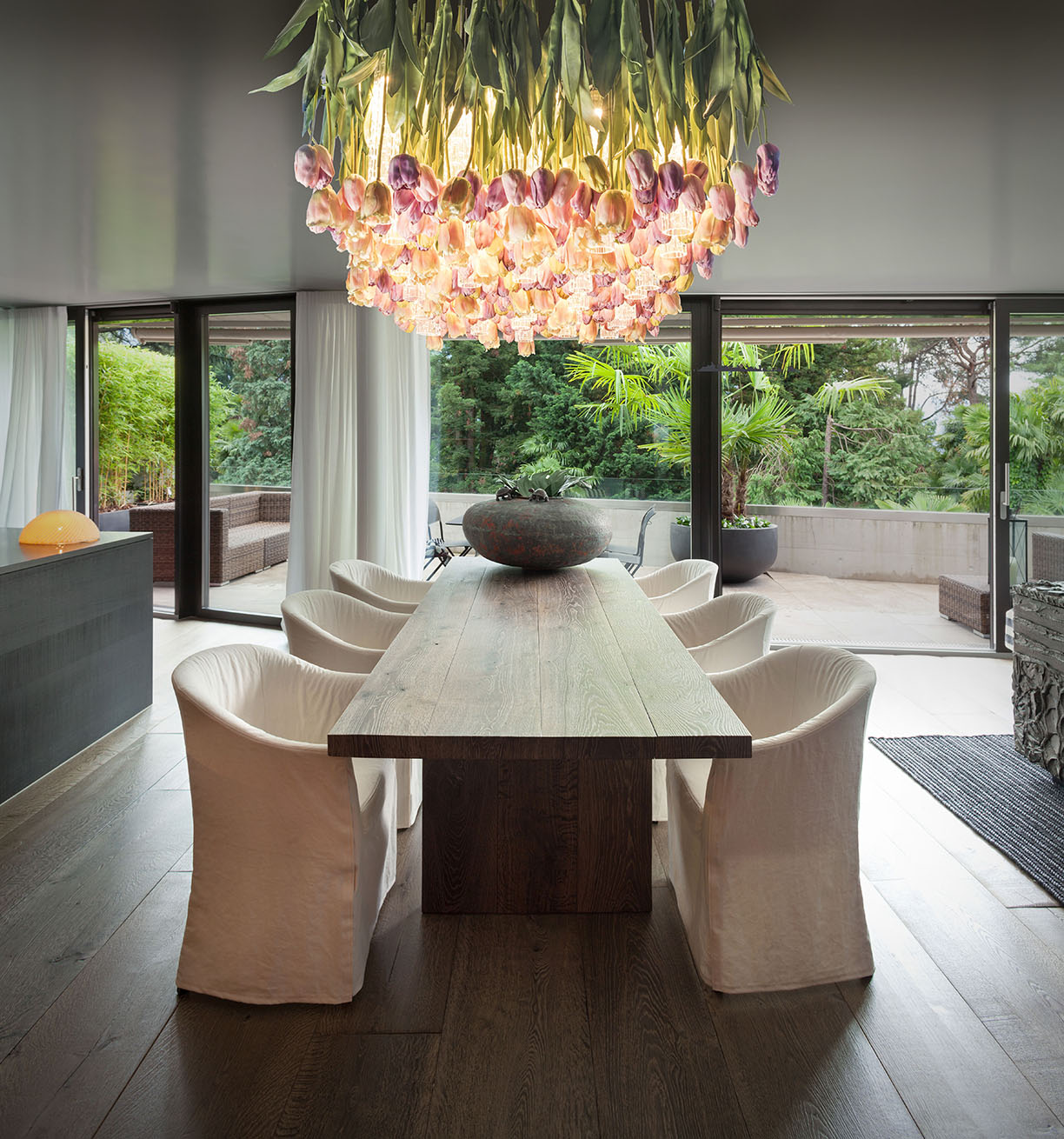
Photo courtesy of VG New Trend
When it comes to lighting, many chandeliers are starting to incorporate elements of nature to bring a more natural, elegant look. Both of these chandeliers are surrounded by vines and flowers, allowing the natural elements to be woven into the design. While critics may argue that the “unrefined” elements of nature decrease the elegance of the chandelier, these rooms prove them wrong. While remaining luxurious, the chandeliers’ design provide a warmer and more relaxed atmosphere.
Natural elements can also be incorporated into the wallpaper of a room, adding a bold yet comfortable piece to the space. Regardless of the individual’s style, nature-oriented wallpaper can be incorporated.
For a more feminine look, a bold, floral wallpaper does just the trick. The bright colors add a fun and relaxed style, while the natural elements of the flowers freshen up the atmosphere of the room.
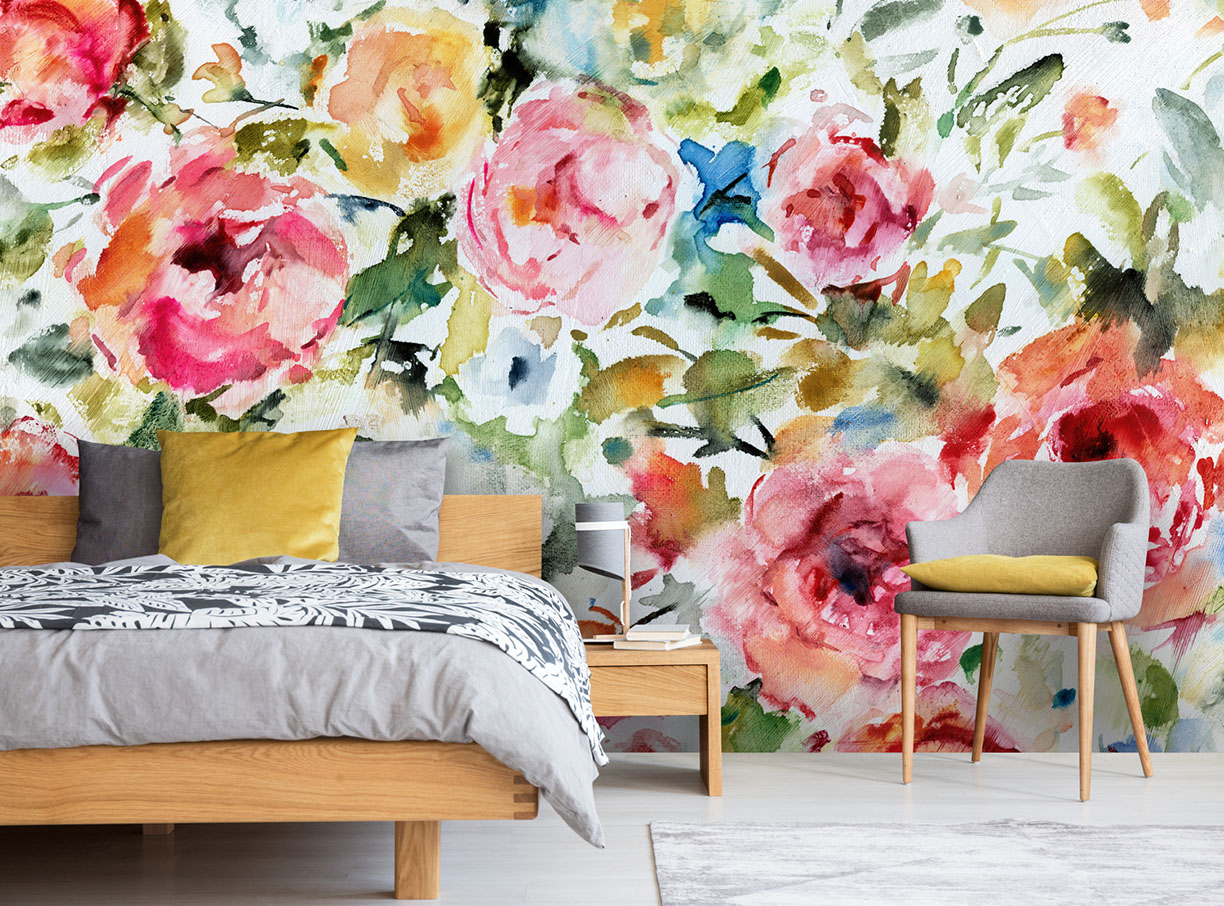
Photo courtesy of Wallsauce
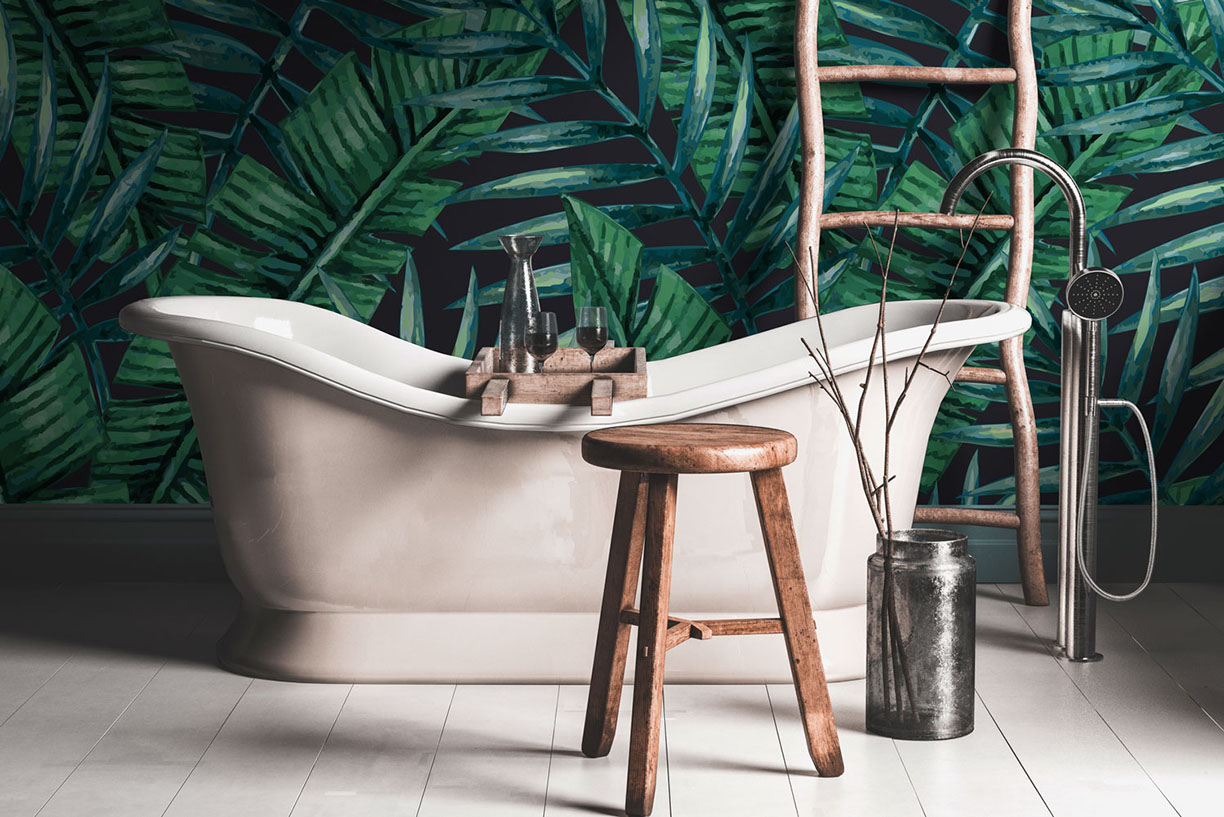
Photo courtesy of Wallsauce
If you’re looking for a less feminine wallpaper, however, incorporating nature to the room is certainly still possible. The darker wallpaper in this bathroom, although much less feminine than a floral backdrop, still adds natural elements to give the room a fresh look.
Wellness may be a hot topic, but not everyone is sure what it means.
Every year one topic seems to dominate real estate. This year it’s wellness. Yet, if you ask designers and architects what comprises wellness in he home you are apt to get a variety of responses ranging from connections to nature to spaces for meditation or yoga to air quality. Some might point to certifications such as Wellness Within Your Walls or the WELL Building Standard or biophilic design. Others say LEED and other green certifications address wellness.
“I think health and wellness is still in the ‘public education’ stage of what it means. All last year you’re hearing it more and more and more. But I still think it’s educating the designer,” and the public, says Beverly Hills designer Christopher Grubb, president of Arch-Interiors Design Group. Designers often understand the term as it applies to LEED accreditation or to aging in place, but not necessarily the overall concept.
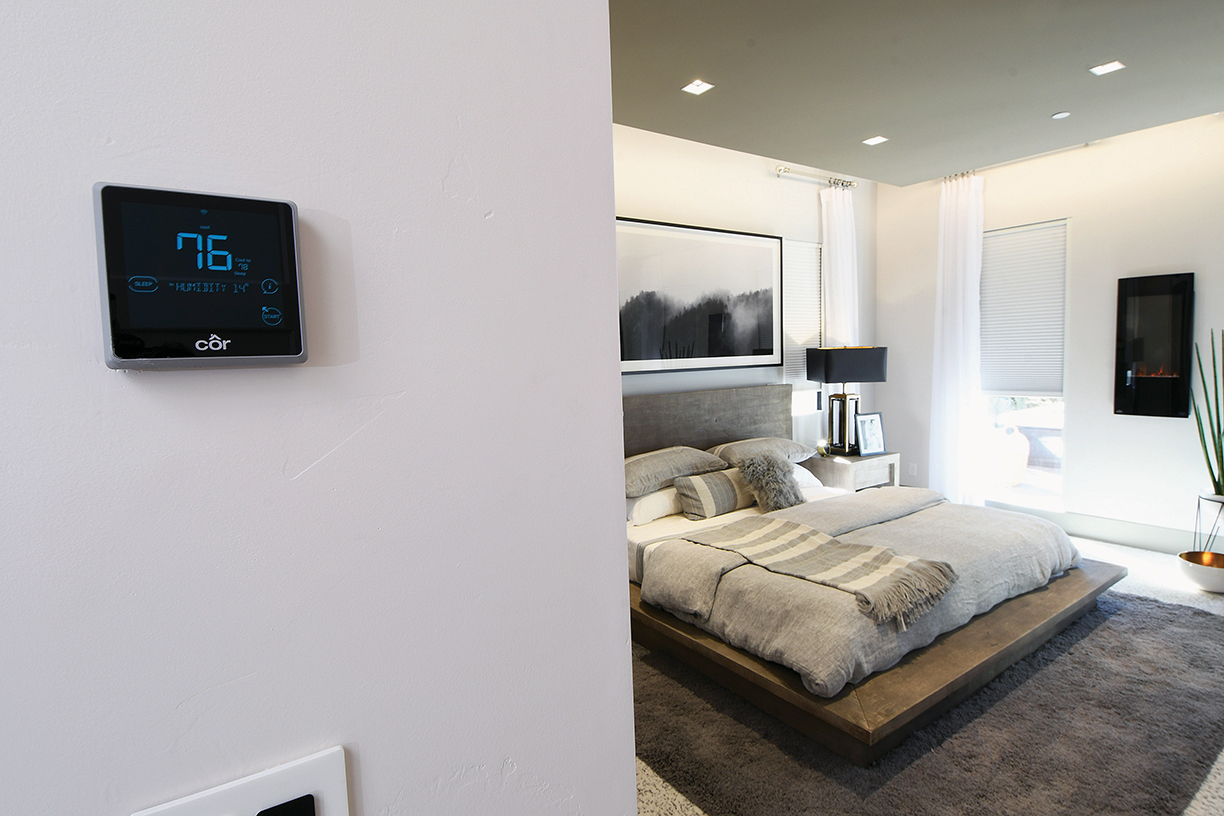
“It might mean one thing to one person and something else to another,” says designer Allie Mann with Case Architects and Remodelers in Washington, D.C., noting that some might be caught up in the movement without fully understanding it.
“I think that this is really being driven by a lot of consumer behavior. When it comes to the builder-developer world, I think our consumers are much more educated. I think they know what they want. They just don’t know how to get there,” says Angela Harris, creative director and principal of TRIO, an award-winning, market-driven, full-service interior design firm in Denver.
“Health and wellness is a new frontier for all of us, says Jacob Atalla, vice president of sustainability for KB Home. KB Home, along with Hanley Wood, KTGY Architects and Delos, a tech and wellness company, created a concept home outside of Las Vegas in Henderson, Nevada, to illustrate what a home designed with wellness as a core value looks like and how it functions. “It is the home story of the future,” he says.
Even though wellness seems to have suddenly burst onto the housing scene in the last year, the idea of connecting home to health is not new. More than 20 years ago, health issues potentially linked to building materials and toxic conditions such as black mold gained attention, giving rise to the term sick building syndrome. Since then, awareness of the relationship between the built environment and health has been growing. A decade ago, new technologies led to the development of products that either reduced the level of toxic contaminants released into the indoor ecosystem or scrubbed the air of VOCs (volatile organic compounds). Other concerns about noise, water and connections with the natural environment were also beginning to surface. At the same time, health and wellness was becoming an important value for consumers worldwide, expanding beyond fitness to include personalized medicine, mind-body connections, spa, wellness tourism and also the built environment.
By 2015, wellness had morphed into a $3.7 trillion industry worldwide, according to the Global Wellness Institute, and climbed an additional 6.4 percent annually to reach $4.2 trillion in 2017. One of the fastest growing sectors in the wellness space is a category called Wellness Lifestyle Real Estate, which includes everything in the built environment that incorporates wellness elements in design, construction, amenities and service. In addition to physical well-being, wellness real estate also addresses social wellness and mental, emotional and spiritual wellness.
The biggest difference between homes designed to promote wellness and homes that address air quality or other environmental factors that impact physical health is that wellness is integral to the design and permeates every aspect of the home from floor plan to amenities. “Overall you are programming the home to be more livable,” says Harris.
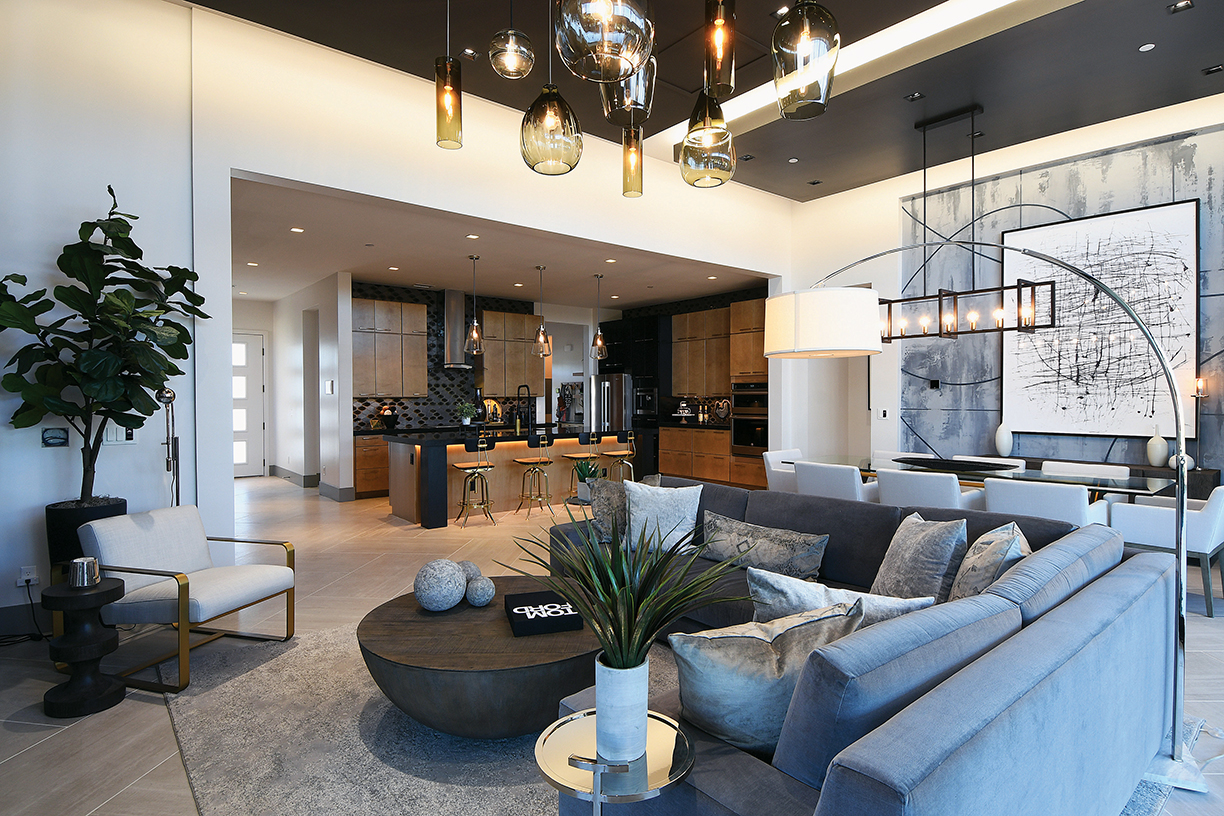
Frustrated by the lack of attention to the ways in which indoor environments influence health, Phil Scalia, a former partner at Goldman Sachs, founded the initiative that eventually became Delos, which has been on the forefront of wellness in the built environment for more than 10 years. In 2014, Delos established the WELL Building Standard, which was initially applied to commercial buildings. Over 1,200 projects in 45 countries, across over 250 million square feet of commercial real estate, fall under the WELL umbrella. The WELL standard focuses on seven categories of building performance: air, water, nourishment, light, fitness, comfort and mind. Additionally, it takes connections between a building and the surroundings into consideration.
During groundbreaking work on EcoManor, the first LEED Gold certified single-family residence in the U.S., designer Jillian Pritchard Cooke discovered that both consumers and design and construction professionals lacked accurate information on how to reduce toxins in the interior environment. That was the inspiration for Wellness Within Your Walls, another wellness certification that offers education on building and designing healthier interior environments. The focus is on materials both for construction and also furnishings and finishes.
Another more recent wellness initiative centers around the principles of biophilic design and the benefits of bringing natural elements into buildings. In 2016, Amanda Sturgeon, a biophilic design expert and CEO of the International Living Future Institute spearheaded the Biophilic Design Initiative. In addition to designers, builders and architects, current proponents include tech companies who have added natural elements to buildings to increase productivity and reduce stress for workers.
This year, it’s fair to say wellness is coming home as attention shifts from commercial to residential applications. The KB ProjeKt Home takes wellness in residential structures to the next level. Not only are established practices regarding connections with the outdoors, indoor toxins and air quality embedded in the design, but a synergy with smart home tech transforms wellness from a passive attribute into one that is active.
“The motivation was to examine how we can make the home healthier and at the same time how do we engage that home in partnering with the occupants, with the people living in it, to enhance their health and wellness or engage them in making the environment they live in better. We know that about 90 percent of our lives are spent indoors, and a lot of that indoor living is in your own home,” Atalla explains. Recent research from Hanley Wood shows that homeowners believe housing is essential or extremely important to good health, and two-thirds say the right housing environment could cut annual medical costs by 40 percent.
Central to the home’s wellness quotient is an innovative smart system, dubbed DARWIN, developed by Delos. This first of its kind, home wellness intelligence network constantly monitors the home environment and interacts with and adjusts systems in the home as needed. A network of sensors built into the walls — there are nine in the ProjeKt Home — constantly tests air quality.
If it detects problems with air quality, containments or chemicals from everyday products, DARWIN directs the climate control systems to bring more fresh air to that room. Water quality is also monitored, and purified water is delivered to every fixture in the home. “You have a wellness intelligence system that is constantly doing things on your behalf to increase your wellbeing,” says Atalla.
The system also monitors the plumbing system and alerts homeowners to leaks. Sleep is an important wellness component and the master bedroom in this home is primed to promote slumber. Special noise-damping drywall ensures quiet. Motorized shades block out exterior light. “Total quietness, total darkness, and circadian rhythms help you sleep,” adds Atalla.
Lighting is another mainstay of wellness formulas, both natural light from large windows and expanses of glass as well as interior lighting keyed to circadian rhythms. DARWIN adjusts lights to match the time of day. But what makes this function more worthwhile is the homeowner can change the lighting to produce a desired effect, which means the lights can create an energizing morning environment even if morning comes at 5 a.m. on a stormy day.
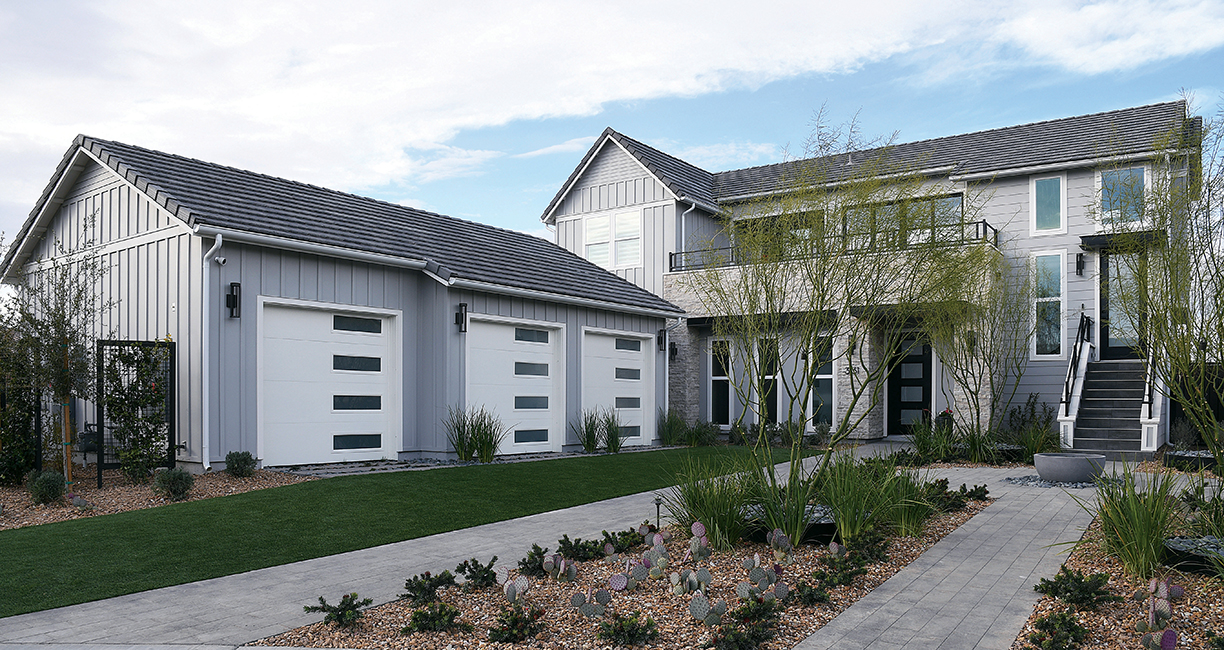
A living garden wall enables the home to grow herbs and microgreens. Turning the home and kitchen into a place to produce healthy food is an emerging area of innovation for kitchens.
Social interaction is another wellness component, and community design increasingly takes social interaction into account with spaces such as walking trails, parks and coffee houses designed to encourage interaction and encounters among residents as part of everyday life.
It might seem like a big jump to add wellness to typical new homes, particularly production homes, but Atalla says the KB ProjeKt Home is an example of what can be done. Additionally, Harris says it’s often an easy tweak to add features such as water filtration in the kitchen and master bath. “That doesn’t cost a whole lot. And again, I think it’s just about livability and how you’re programming your floor plan to be more livable.”
Looking ahead, most research points to continued growth of the wellness economy, with new initiatives approaching wellness from the perspective of design, construction, materials and function. There are now more than 740 wellness real estate and community developments built or in development across 34 countries — a number that grows weekly according to the Global Wellness Institute.
Right now, the $134 billion wellness real estate market is about half the size of the global green building industry and projections call for the pace to continue. “But the wellness market isn’t just growing, it’s extremely dynamic. We believe that the three sectors that represent the core spheres of life will see the strongest future growth — wellness real estate, workplace wellness and wellness tourism — while other sectors will also grow as they support the integration of wellness into all aspects of daily life,” says Ophelia Yeung, senior research fellow, GWI.
According to The Global Wellness Institute in 2017, travelers took 830 million wellness trips — 139 million more than in 2015. As one of the fastest-growing travel trends, wellness travel currently represents 17 percent of total tourism expenditures. As people worldwide embrace their own health and wellness destinies, Health and Fitness Travel (a company that specializes in wellness-based vacations) predicts that Nature Immersion Getaways will be an emerging trend in 2019.
From Belize, Canada to Japan, here are a few of the top destinations across the world that allow visitors the chance to focus on their health and wellness — whether it’s reducing stress, staying active, connecting with their emotions, or indulging on the thrill of a lifetime.
Ambergris Caye, Belize
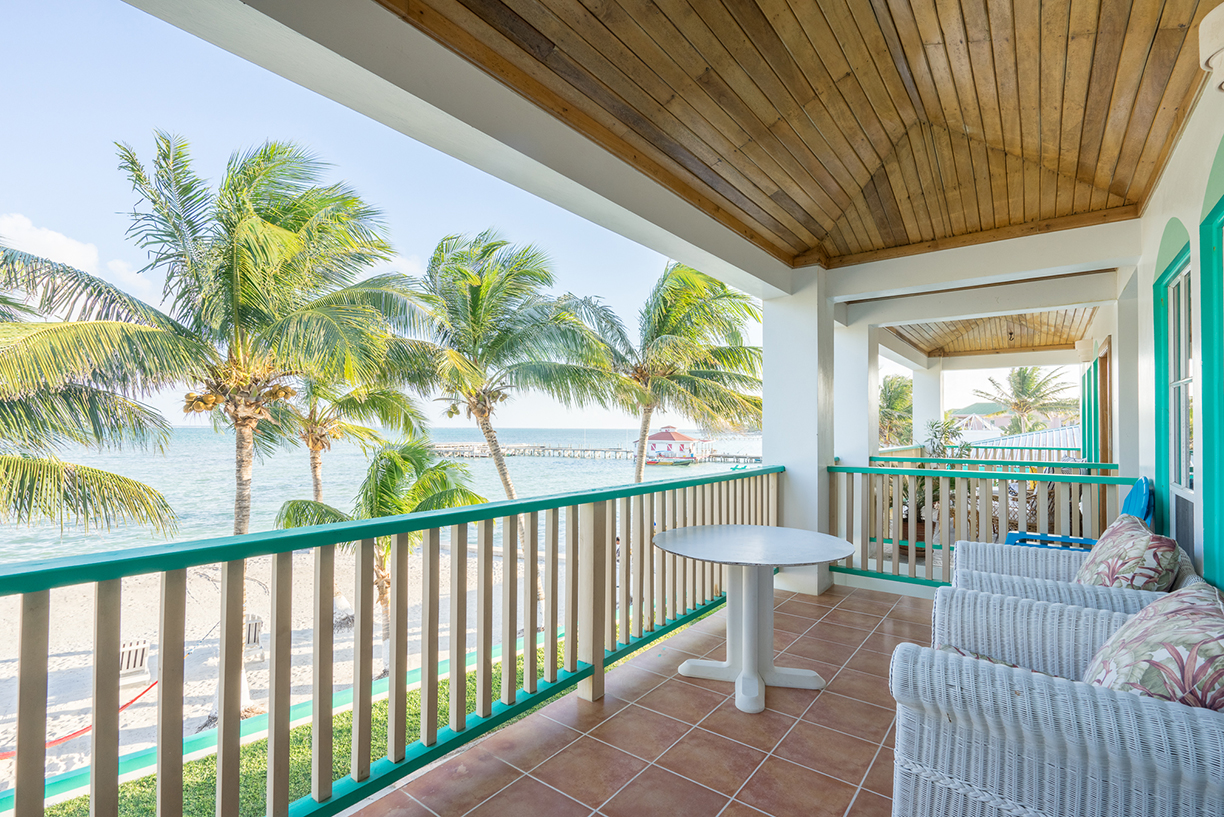
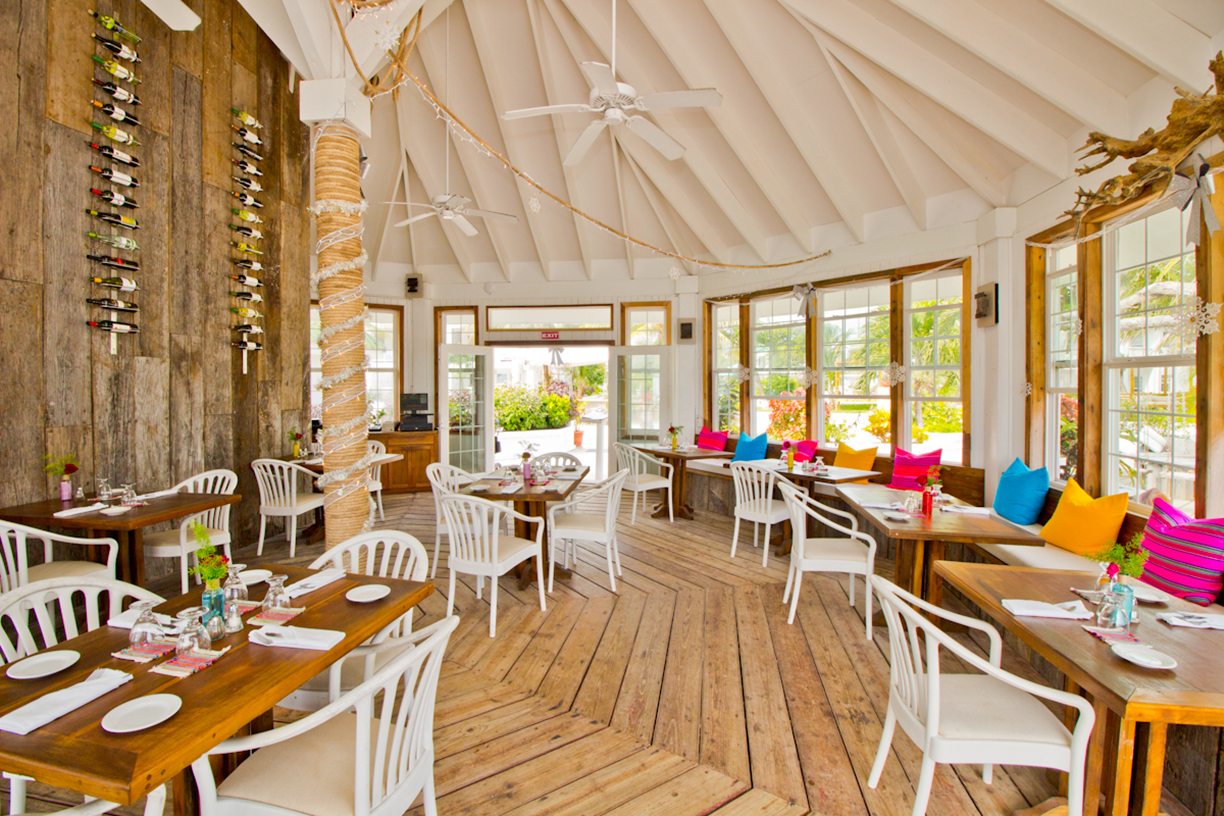
Banyan Bay Suites
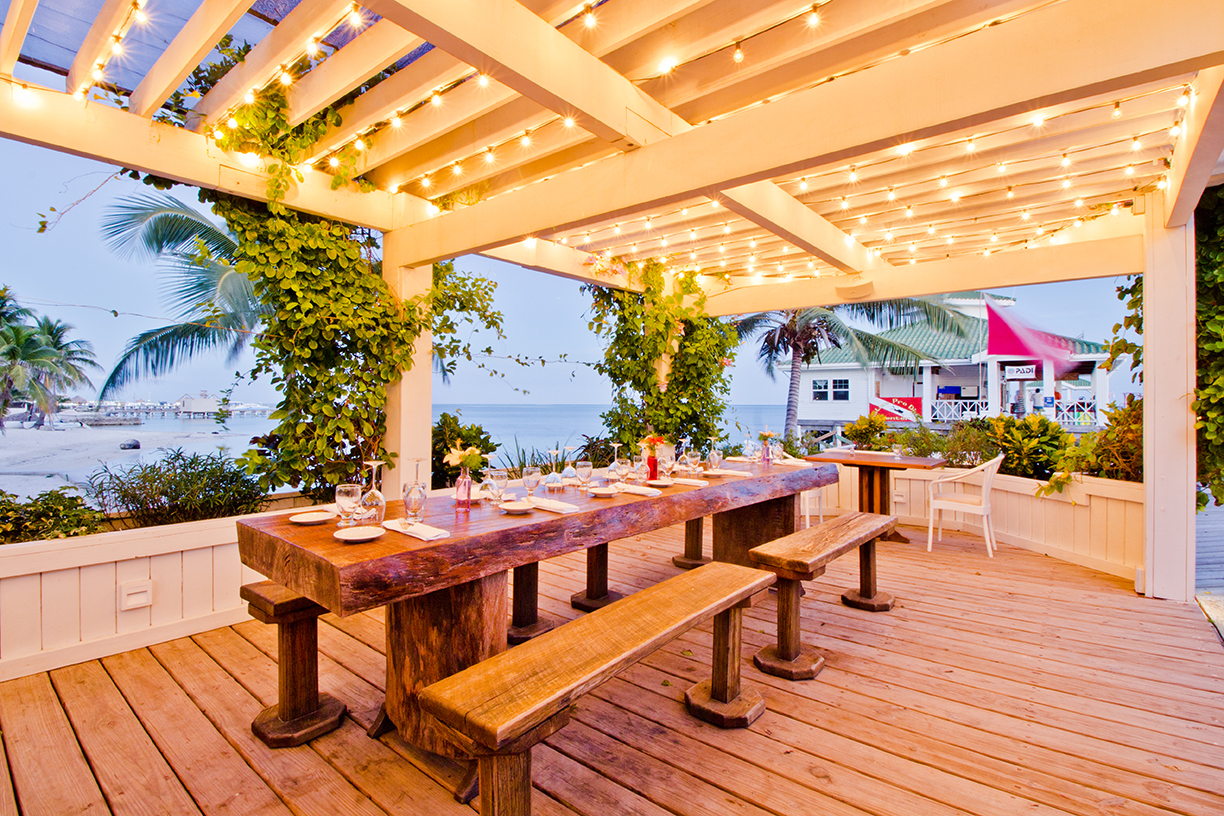
Home to the largest barrier reef in the northern hemisphere, Ambergris Caye is a perfect destination for scuba diving and snorkeling. The Great Blue Hole allows visitors the chance to witness offshore atolls, several hundred sand cays, mangrove forests, coastal lagoons and endangered species. Travelers who would like to stay above water can visit the ancient caves, zipline through the Mayflower Bocawina National Park, or visit the stunning Mayan temples.
Where to Stay:
Travelers who would like to explore Belize’s natural underwater beauty, can stay at Banyan Bay Suites or Grand Colony Island Villas — before the highly anticipated opening of Alaia Belize.
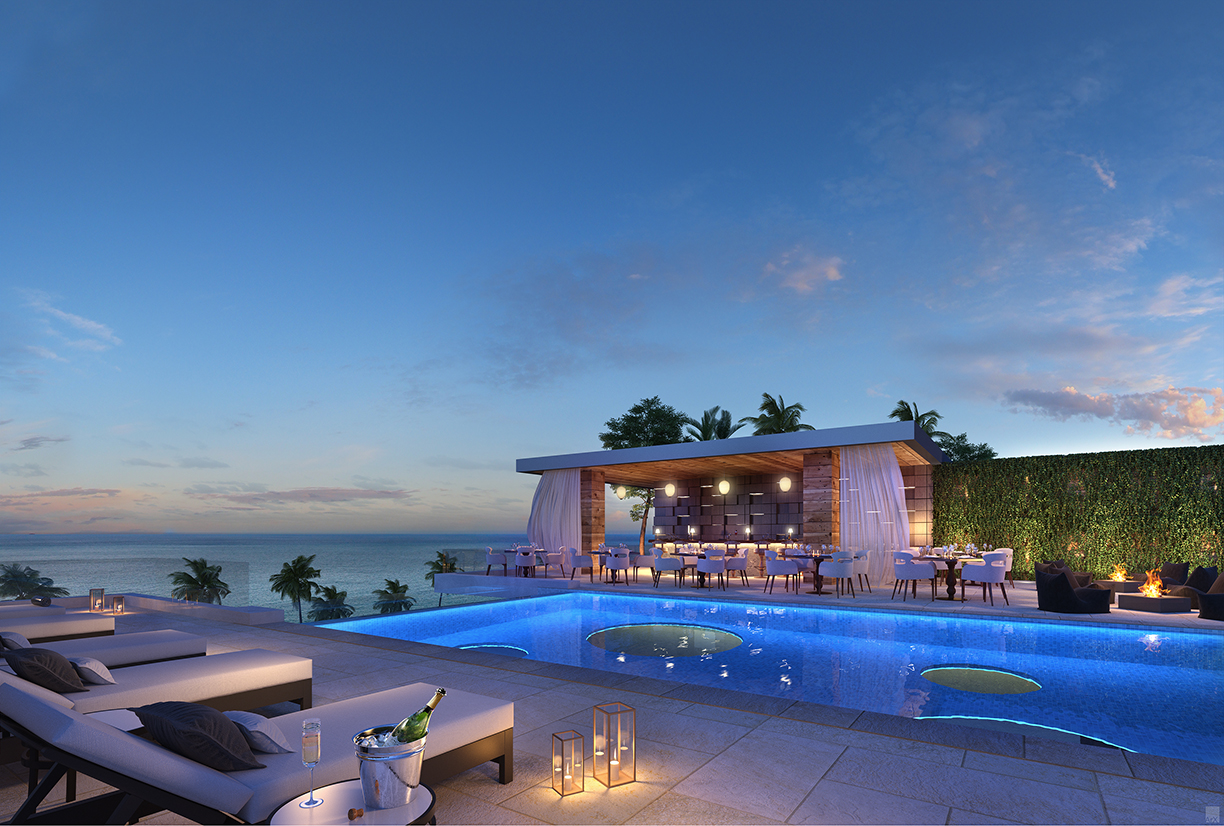
Alaia Belize

Bristol, Virginia
Just moments from the world’s most sought-after adventure destinations, Bristol is a go-to destination for nature-loving travelers. For those looking to go off the grid for a bit, the scenic small town is in close proximity to the Appalachian Trail, where visitors can enjoy a day hike on one of the trail’s challenging paths or a rugged adventure through the ancient Bristol Caverns.
Where to Stay:
After a long adventurous day in the outdoors, guest can kick back and relax at the recently opened The Bristol Hotel.
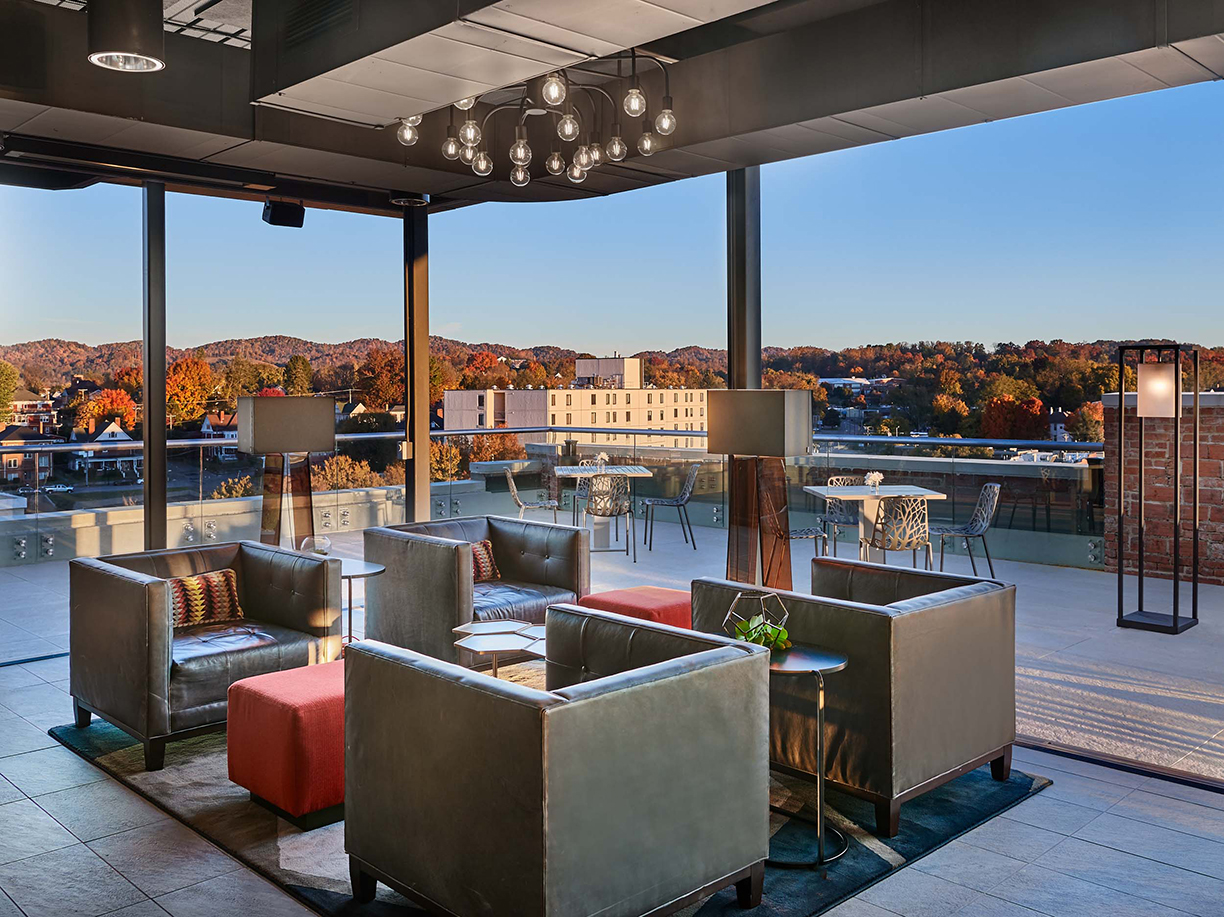
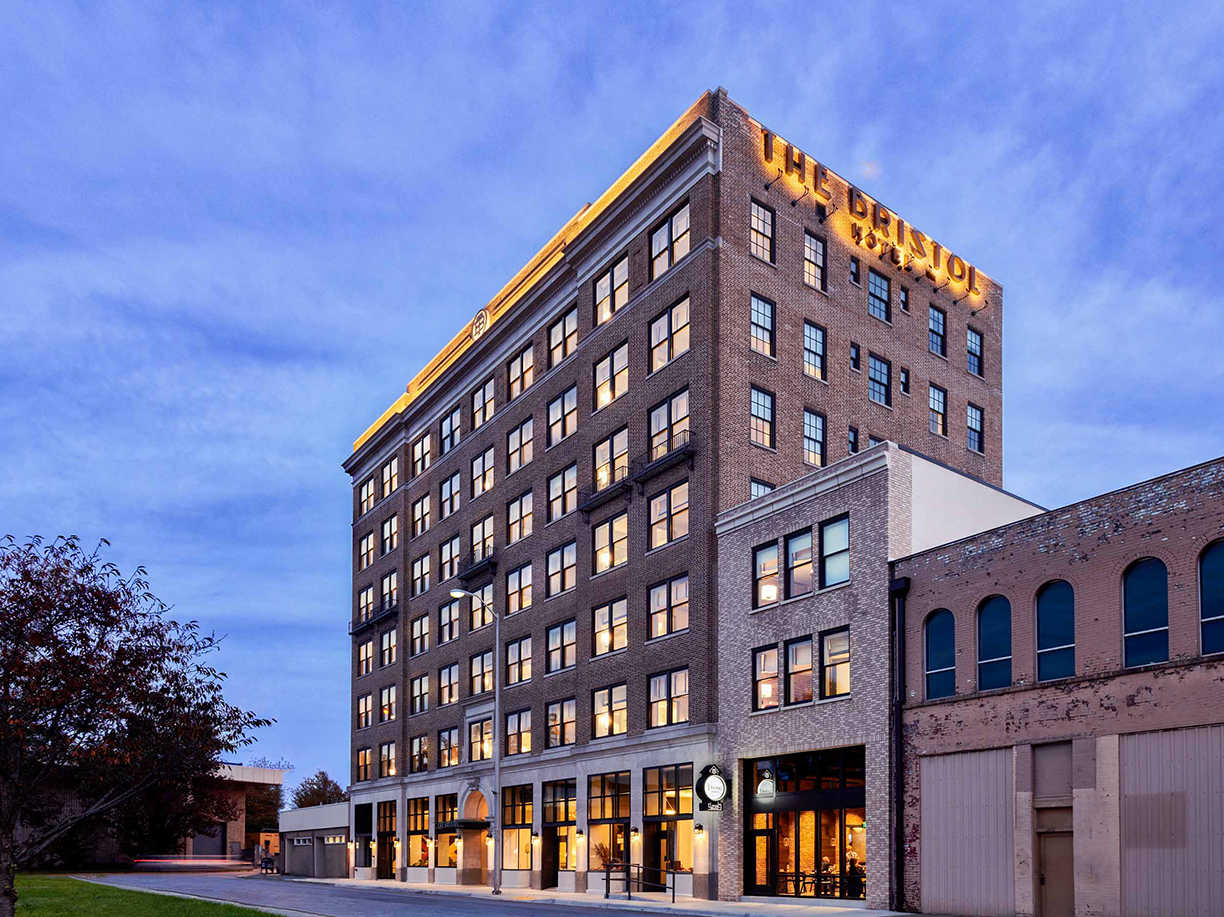
Asheville, North Carolina
Tucked away in the Blue Ridge Mountains, Asheville is a hip, thriving mountain city offering a near-perfect blend of natural beauty and quirky culture in the heart of Southern Appalachia.
Hike through the Great Smoky Mountains, take a day trip to the legendary Biltmore Estate or walk through Asheville’s Botanical Gardens.
Where to Stay:
Guests looking for a serene retreat after a thrilling hike can book a room at The Foundry Hotel, the city’s newest boutique hotel.
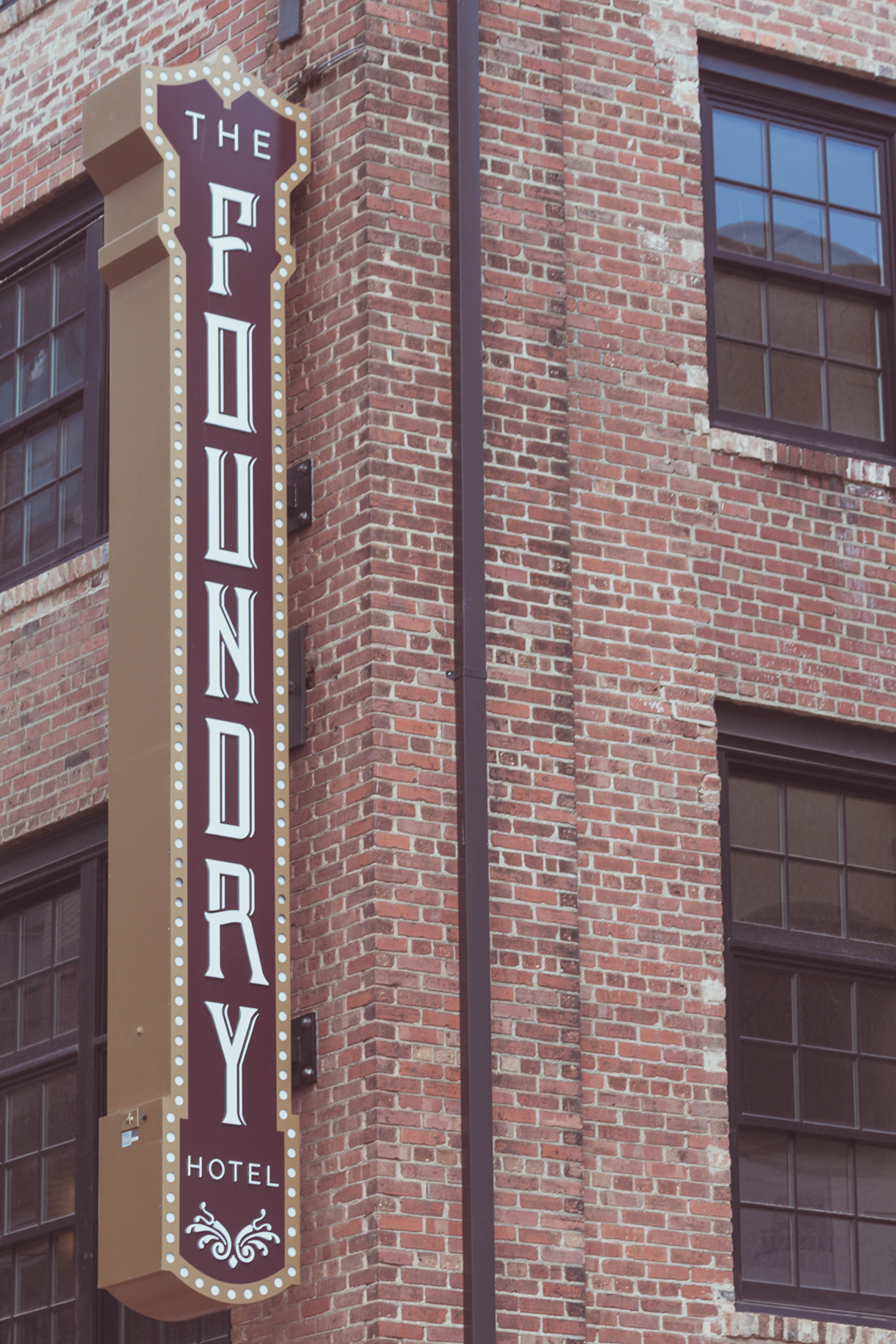
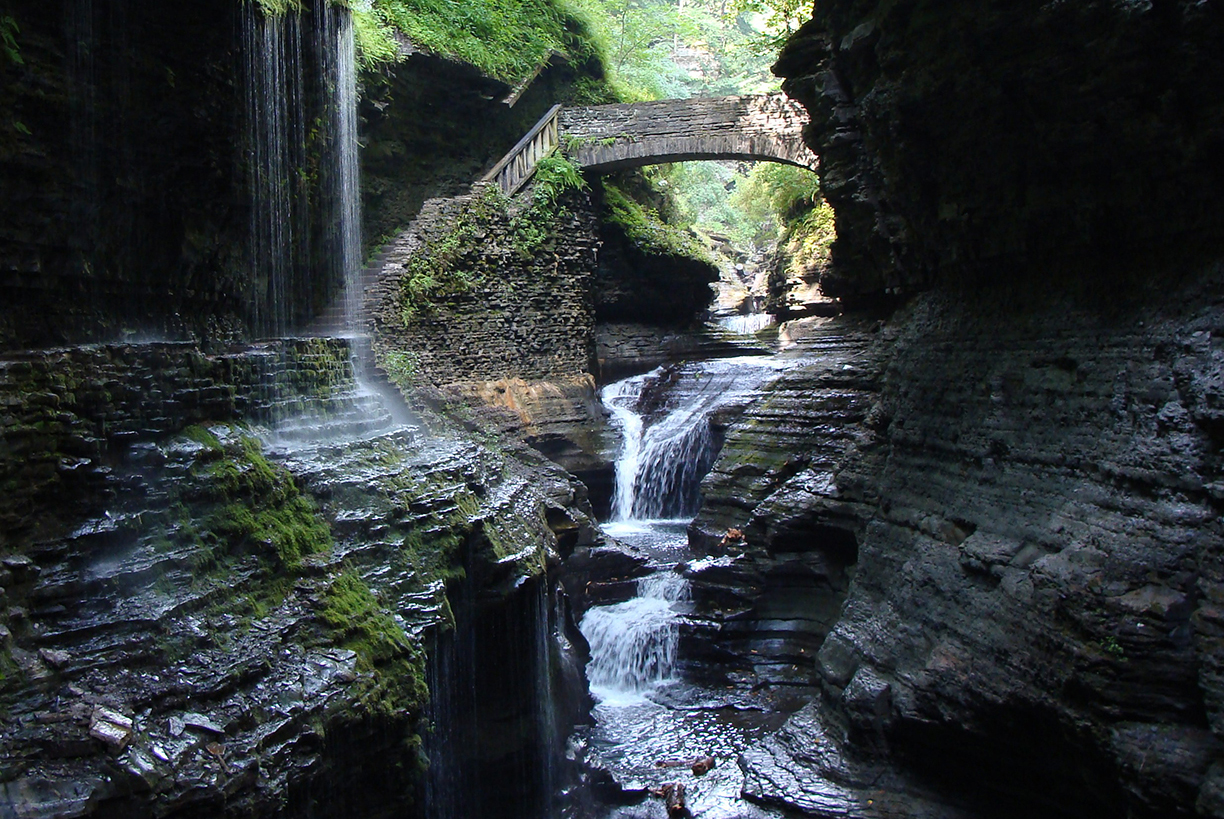
Where to Stay:
At any of the three elevated camping options in the safari tents at Seneca Sol, in the tents with hardwood floors and covered porches at Firelight Camps, and in the Sioux style teepees at Mountain Horse Farm.
Finger Lakes Region, New York
Travelers can hike or hot air balloon over the “Grand Canyon of the East,” stroll past 19-plus waterfalls, book a silent retreat at a monastery, take Wilderness Survival Training, engage in cow cuddling and horse therapy sessions, zip line and ride a mountain coaster through the wild, or air glide over vineyard-dotted valleys.
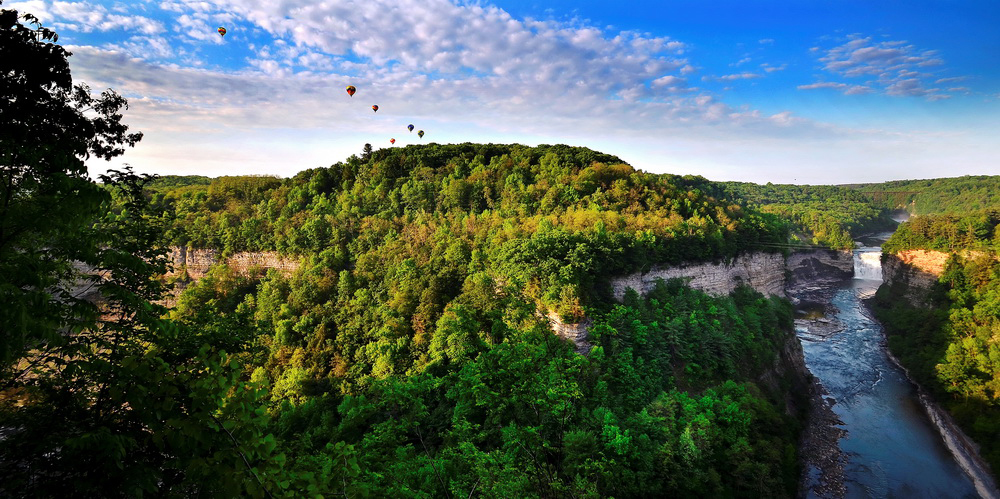
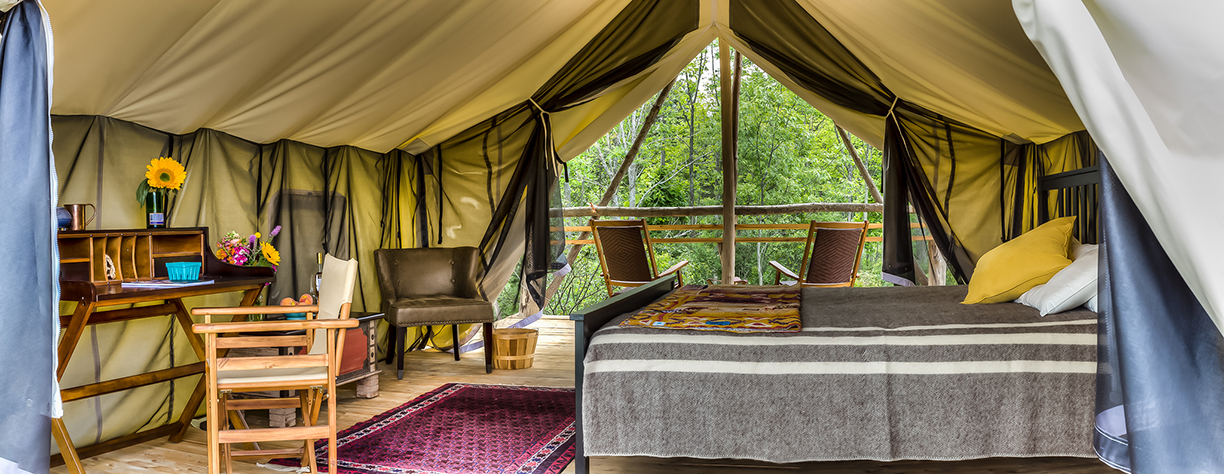
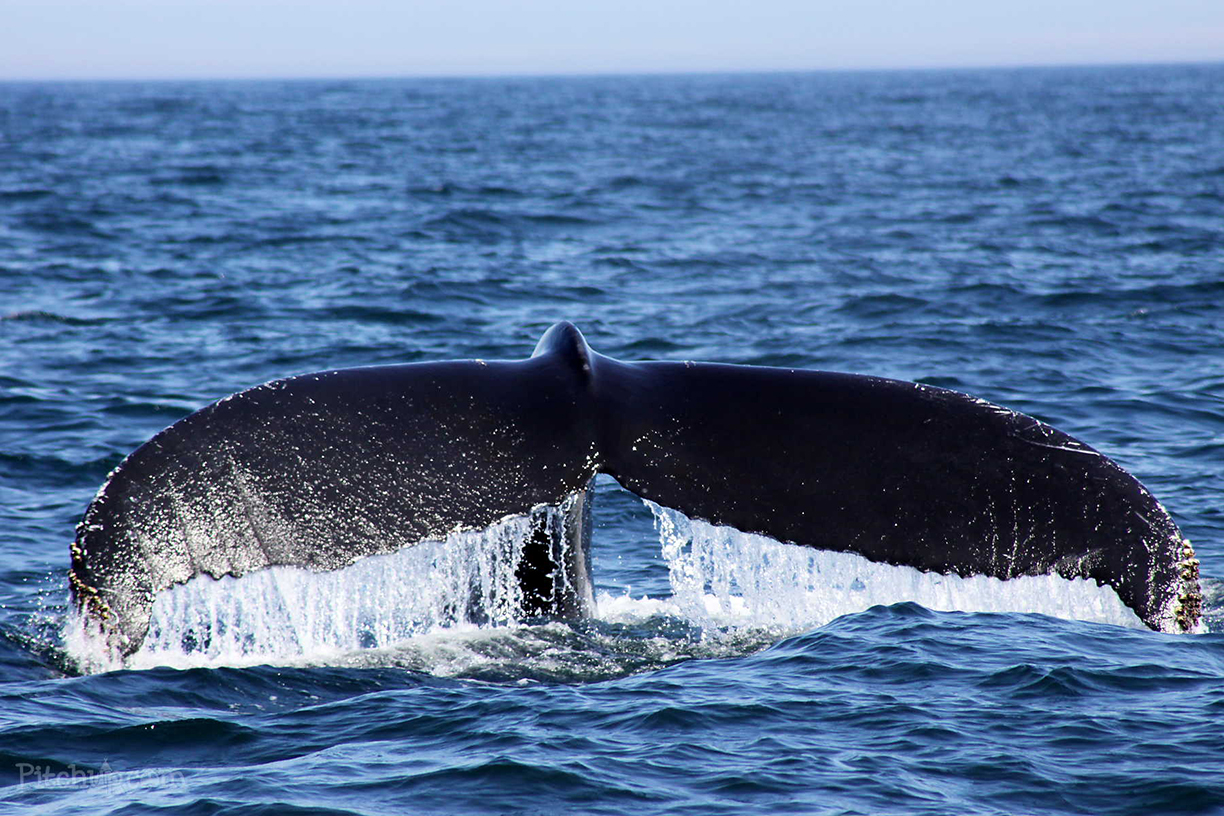
Nova Scotia, Canada
Whale watching reigns supreme in this Canadian region, and guests of Whale Cove Campground in Digby are afforded the luxury of discounts on nearby whale watching boat excursions. For visitors who want to be totally immersed in nature, there are plenty of beaches and birdwatching in the area as well, along with the natural phenomenon Balancing Rock, which appears to defy gravity and “float” above the natural rock formations that line the sea.
Where to Stay:
Whale Cove Campground, a stunning seaside campsite.
Montego Bay, Jamaica
Home to breathtaking natural wonders like Mystic Mountain, Dunn’s River Falls and the Martha Brae River, wellness seekers can hike, raft, zip line and even bobsled their way through Jamaica’s stunning northeast coast.
Where to Stay:
Combining local island ingredients with ancient Jamaican healing rituals, guests may choose to stay at Jewel Grande Montego Bay Resort & Spa.
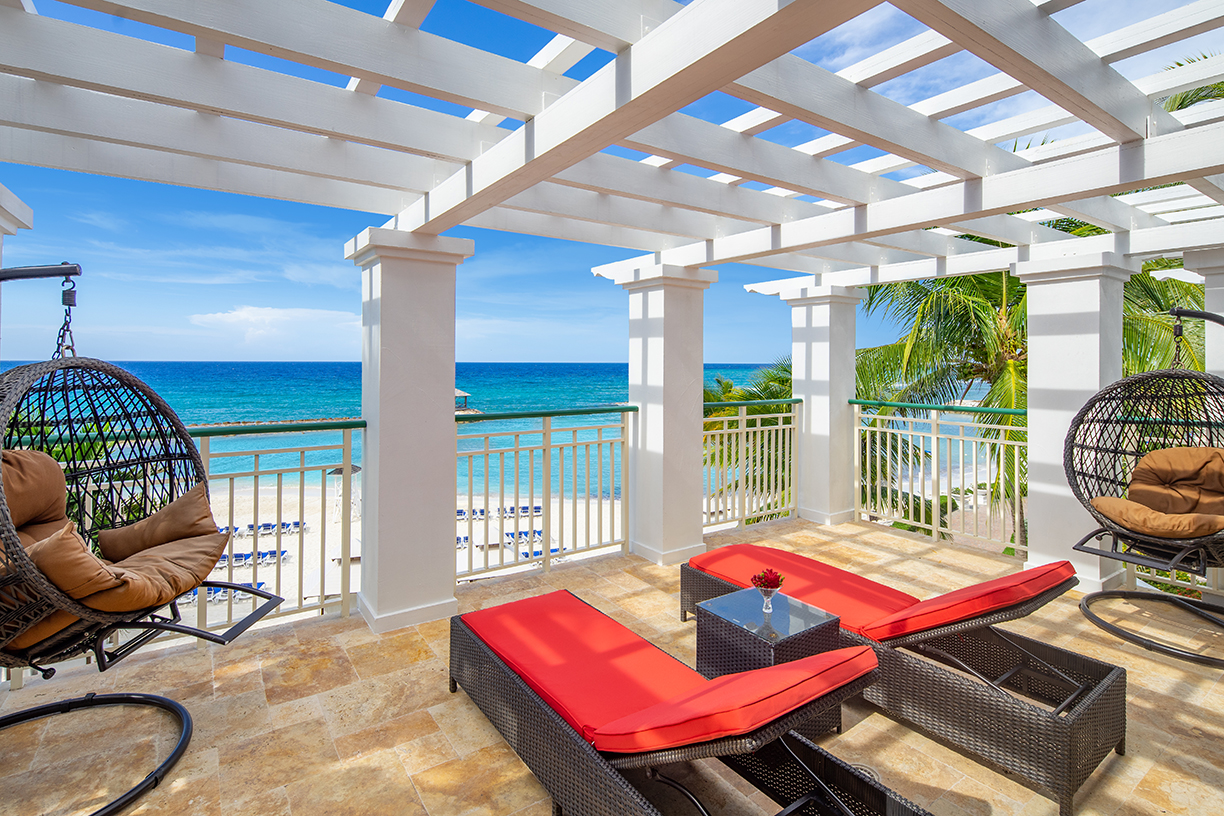
Islamorada, Florida
Nicknamed the “Sport Fishing Capital of the World,” Islamorada is the epicenter of Florida’s most vibrant ocean activities, as diving and snorkeling enthusiasts from all over the world flock to Islamorada to explore the dynamic reef line.
Where to Stay:
Situated on a former coconut plantation with one of the largest private white sand beaches in the region, The Moorings Village is a luxury resort with 18 West Indies-style villas.

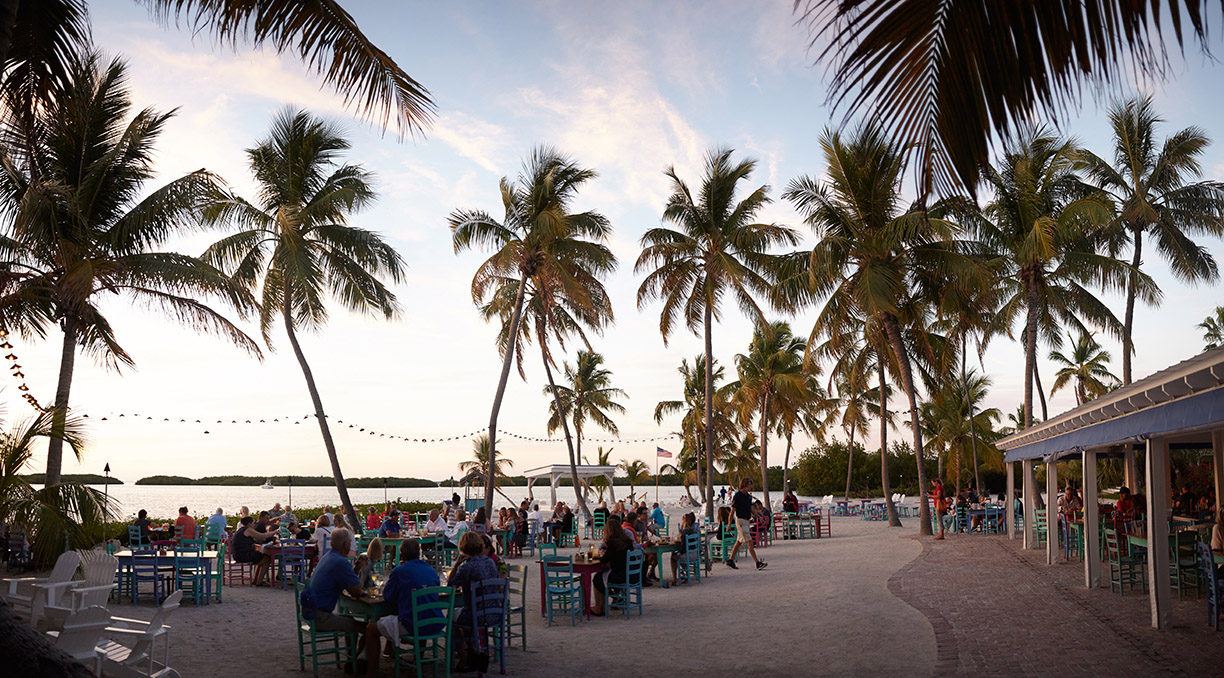

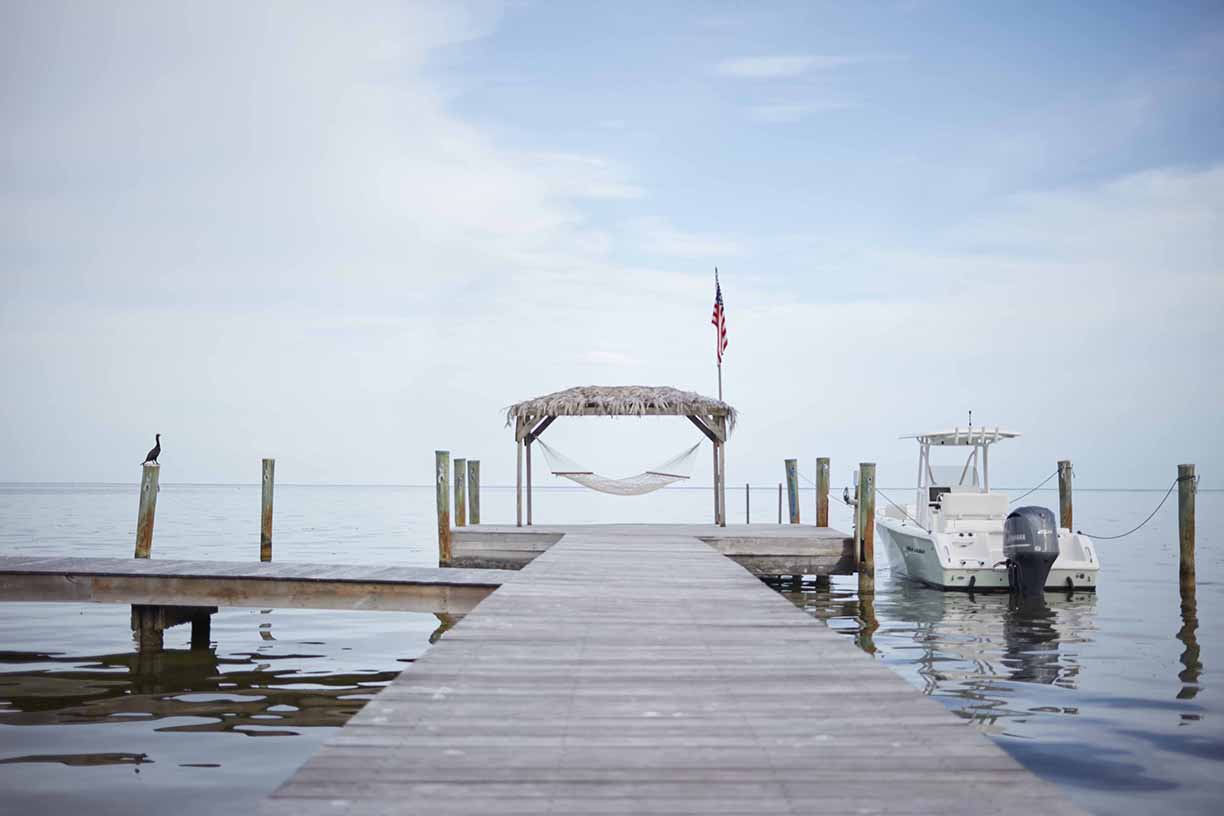
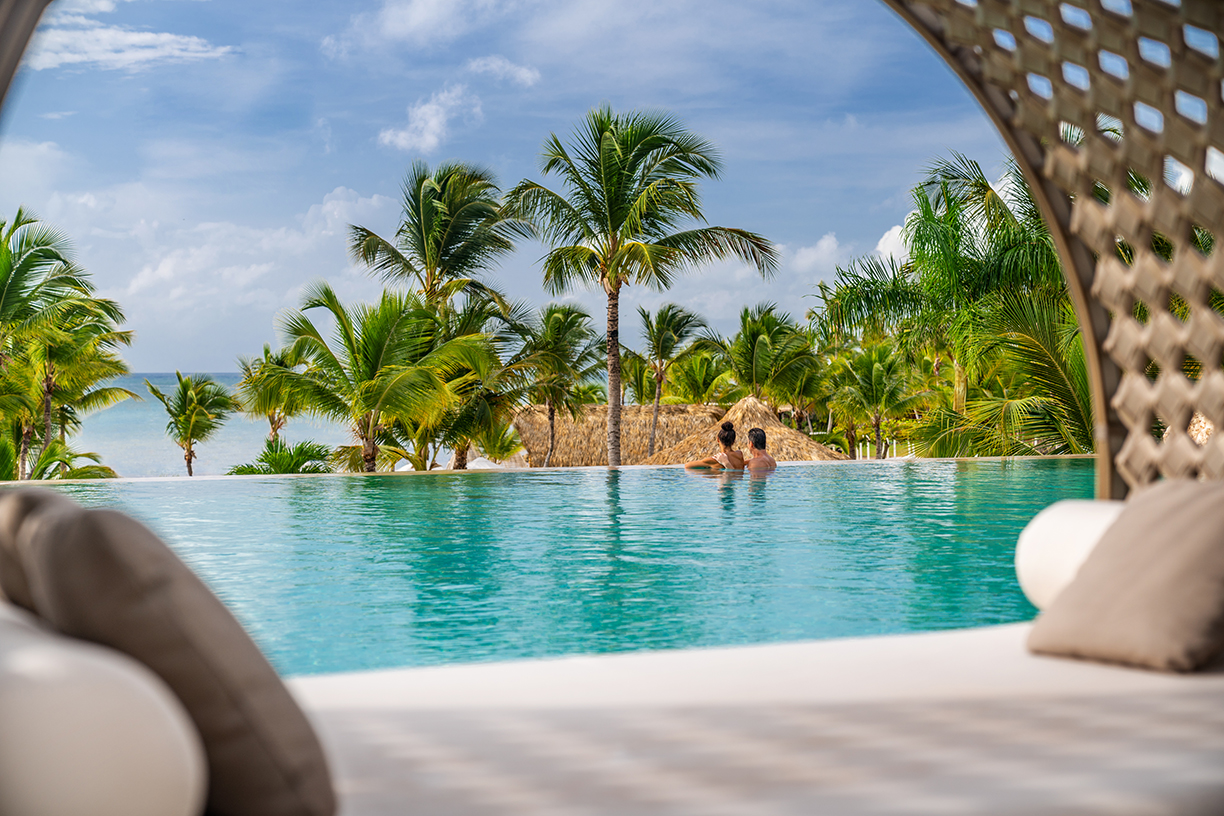
Punta Cana, Dominican Republic
Visitors will have access to the underground tunnels at Iguabonita Cave, a Zip Line Eco Adventure, the secluded Juanillo Beach, the Sunshine Cruise catamaran, the sinkhole at Cenote Indigena Las Ondas, horseback riding and Sanctuary Spa’s new ZEN garden.
Where to Stay:
The newly reimagined, adults-only Sanctuary Cap Cana resort, which offers 20 tropical acres.
Iya Valley in the Setouchi Region of Japan
Travelers who need a quiet escape from their busy lives can immerse themselves in the Iya Valley. Known for its stunning landscapes and outdoor wonders, the Iya Valley offers quiet yet dramatic mountain valleys and gorges, sometimes called “Japan’s Grand Canyon.”
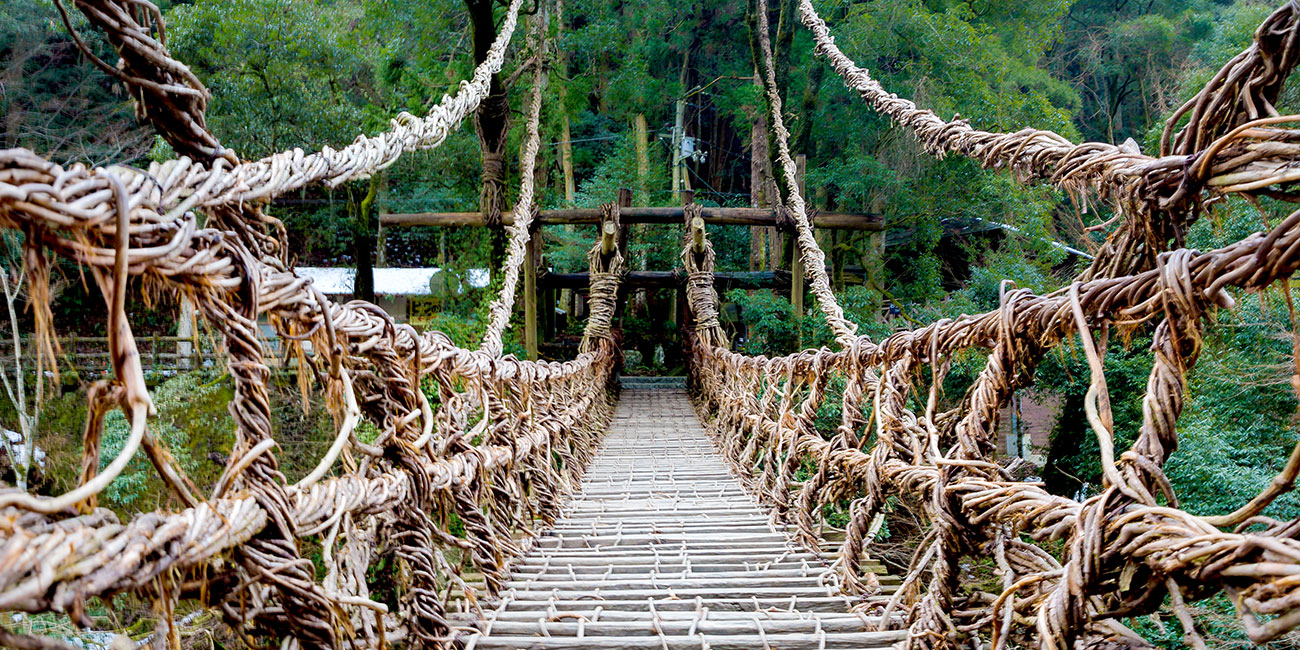
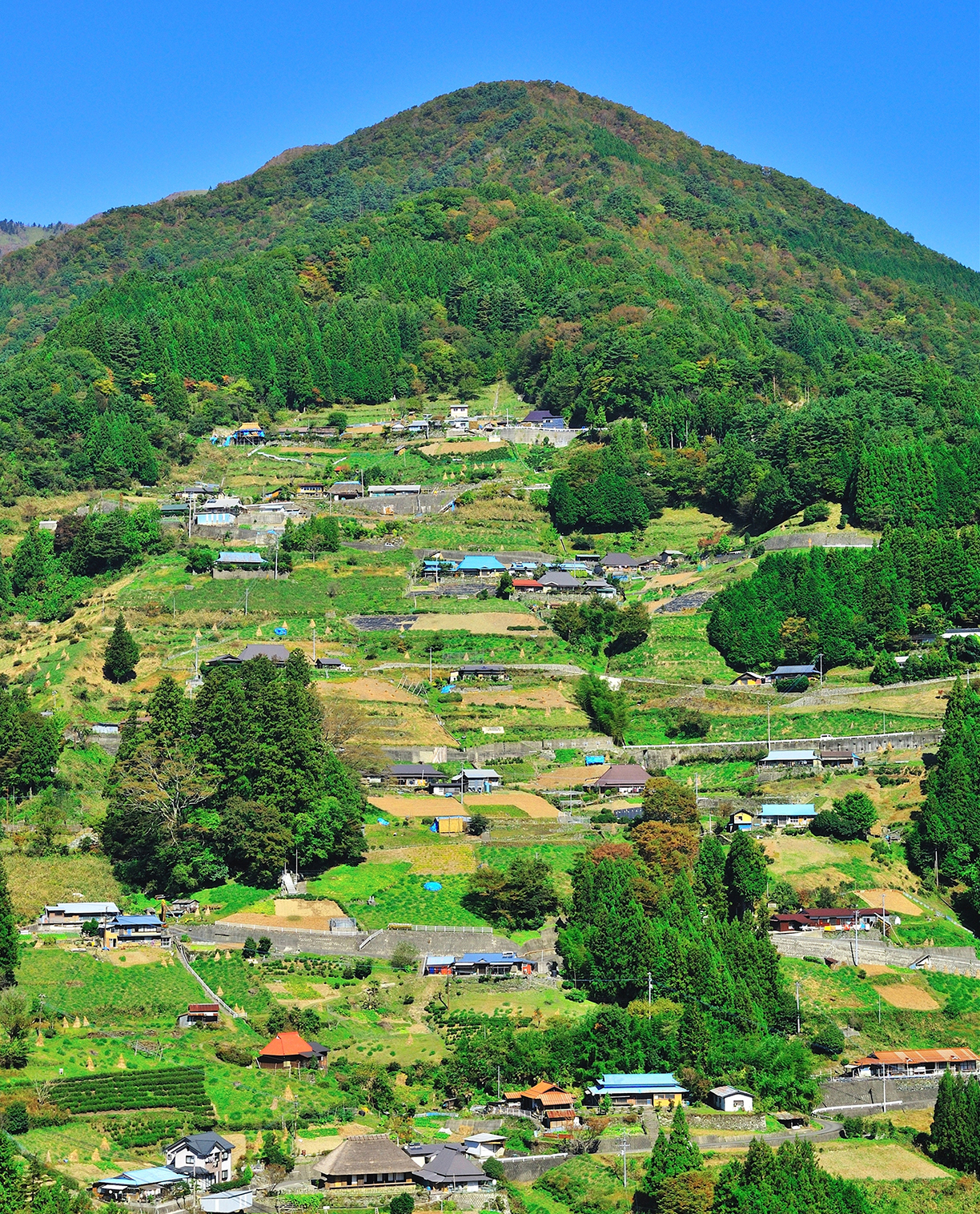
Where to Stay:
The Togenkyo Iya Farmhouses offer private accommodations and offer a way for travelers to experience traditional life in the Iya Valley.














